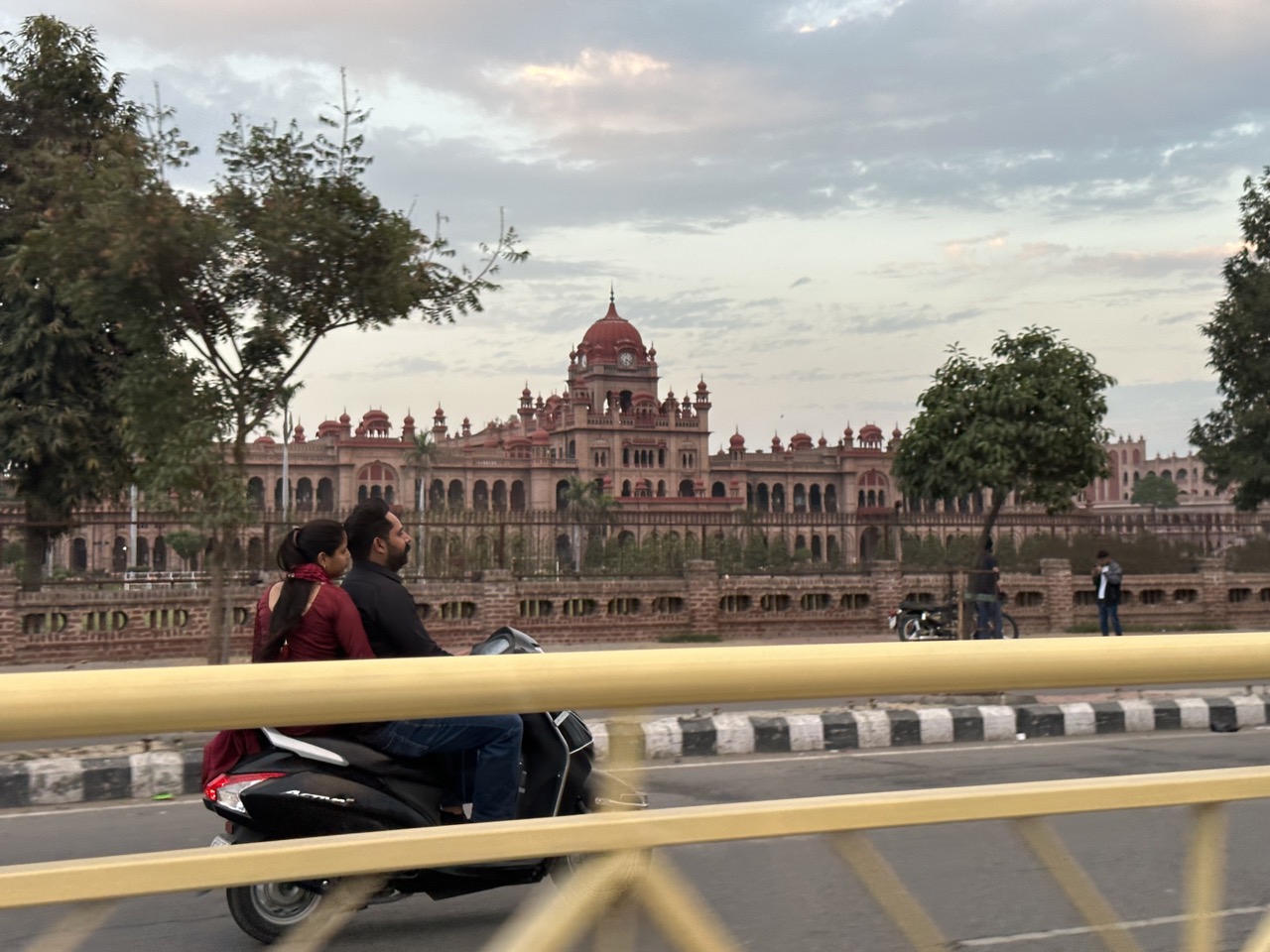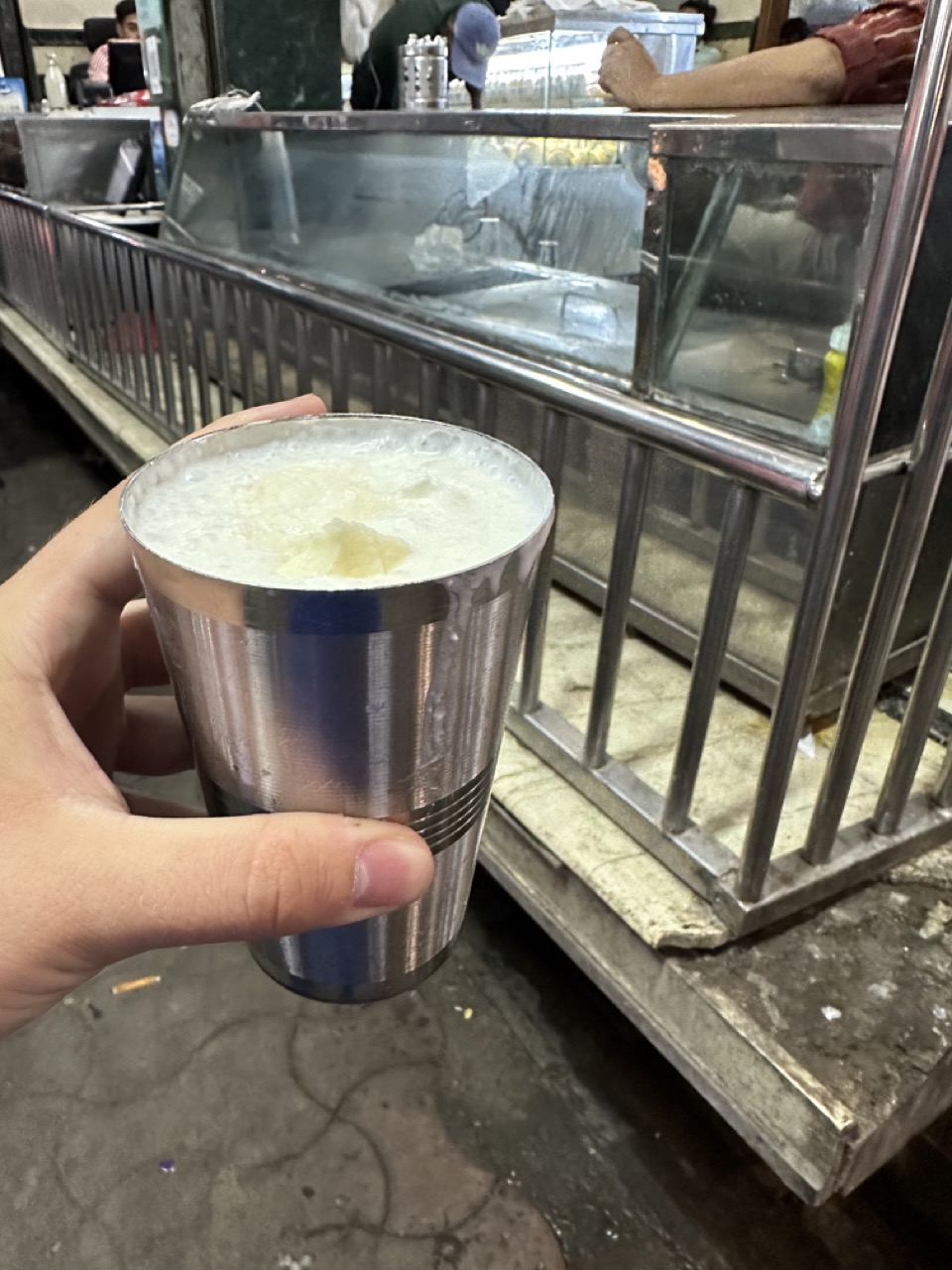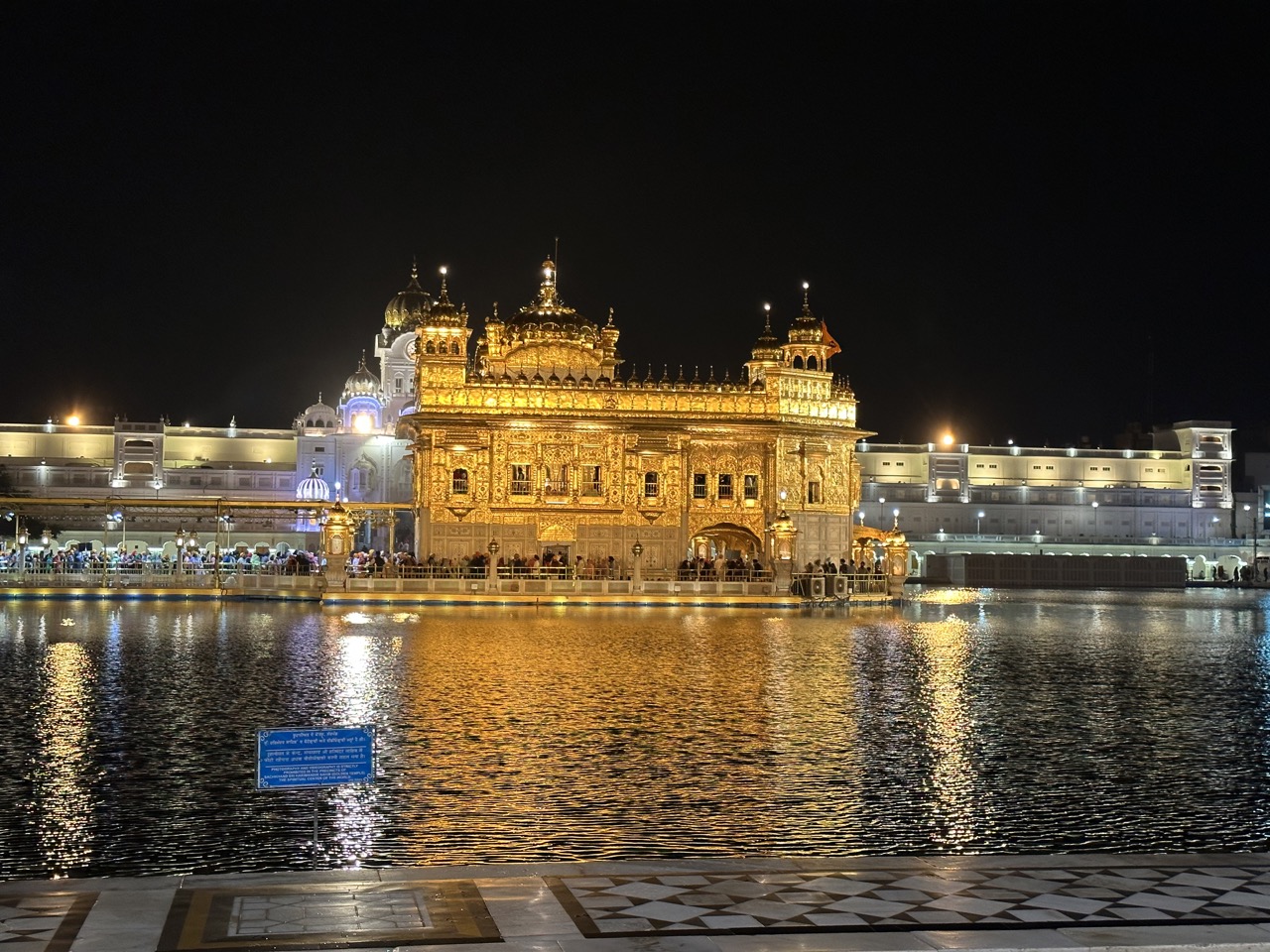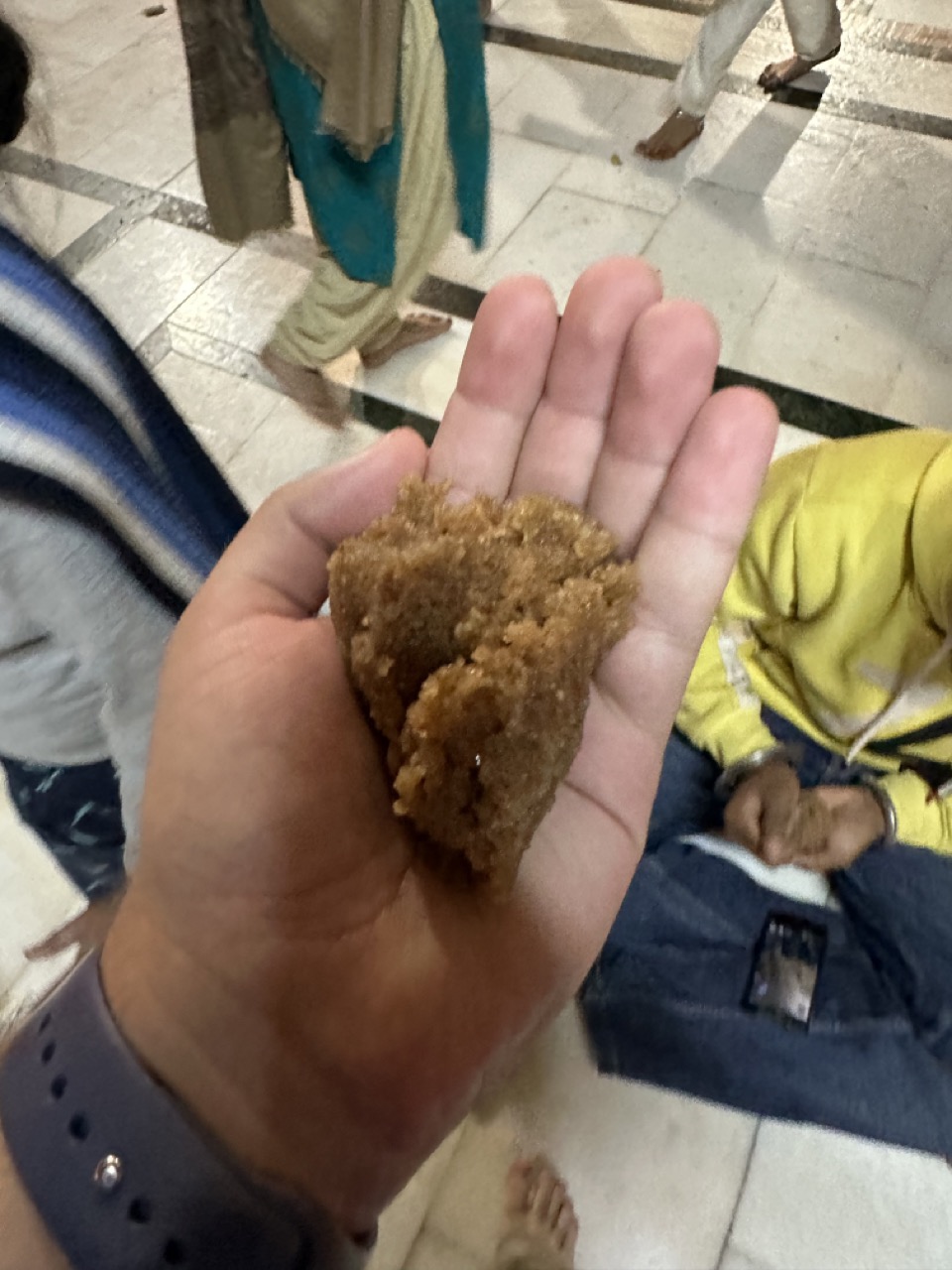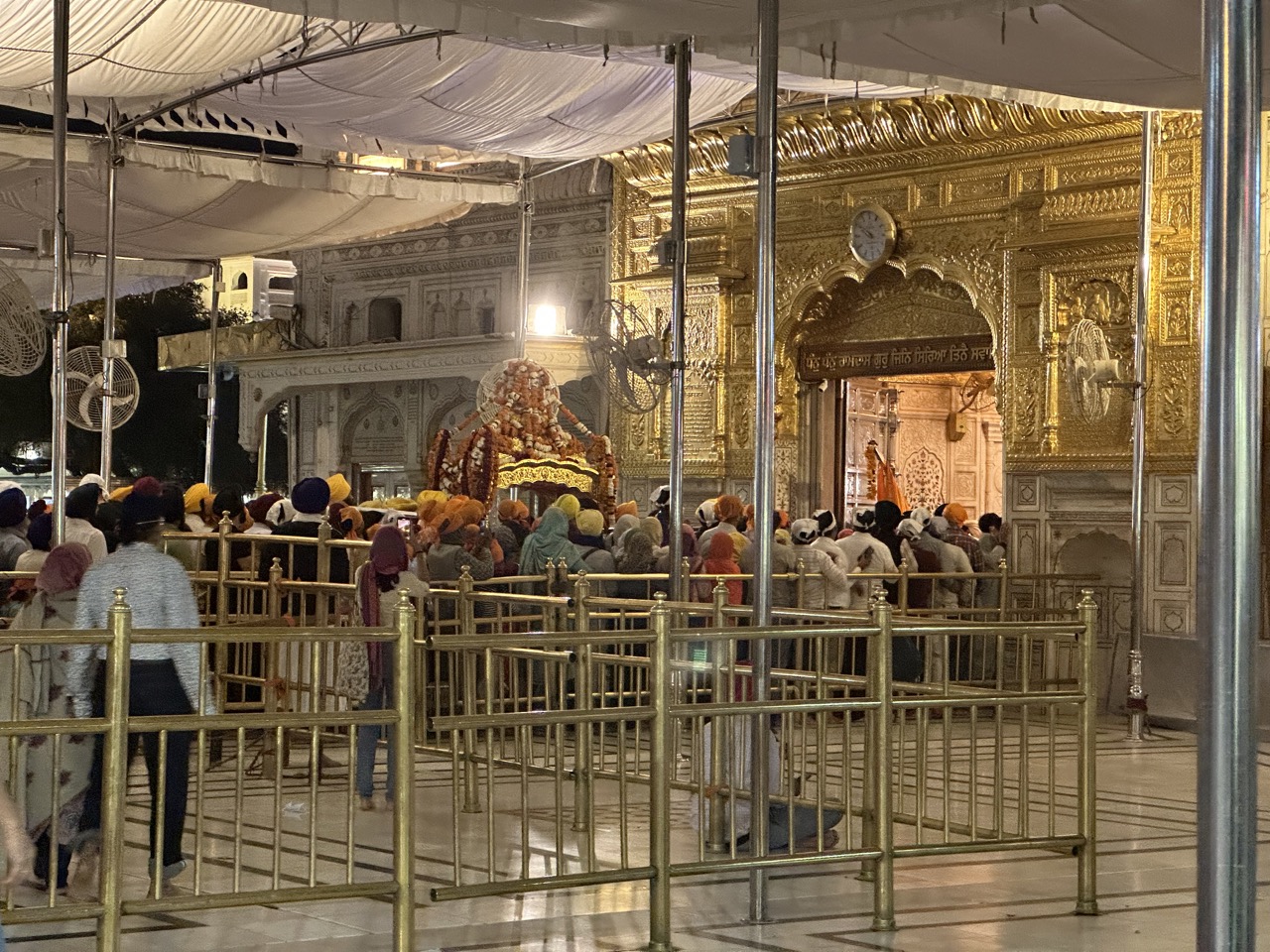Justin Applefield
Amritsar Part 1
March 2, 2023
I woke up early because I wanted to visit the Golden Temple before it got super crowded. The Golden Temple is a major Sikh pilgrimage destination because it is the holiest site for their religion. The Guru Granth Sahib, the holy book that Sikhs believe is the final, sovereign, and eternal Guru that followed after the ten human gurus, is kept inside the Golden Temple during the day. I started my day by walking about ten minutes from my hotel to the Golden Temple ROad, which is a pedestrian street lined with many shops. Even though it was only around 9am it was still surprisingly busy, with lots of people standing outside and drinking chai. I opted to have a glass of piping hot masala chai as well.
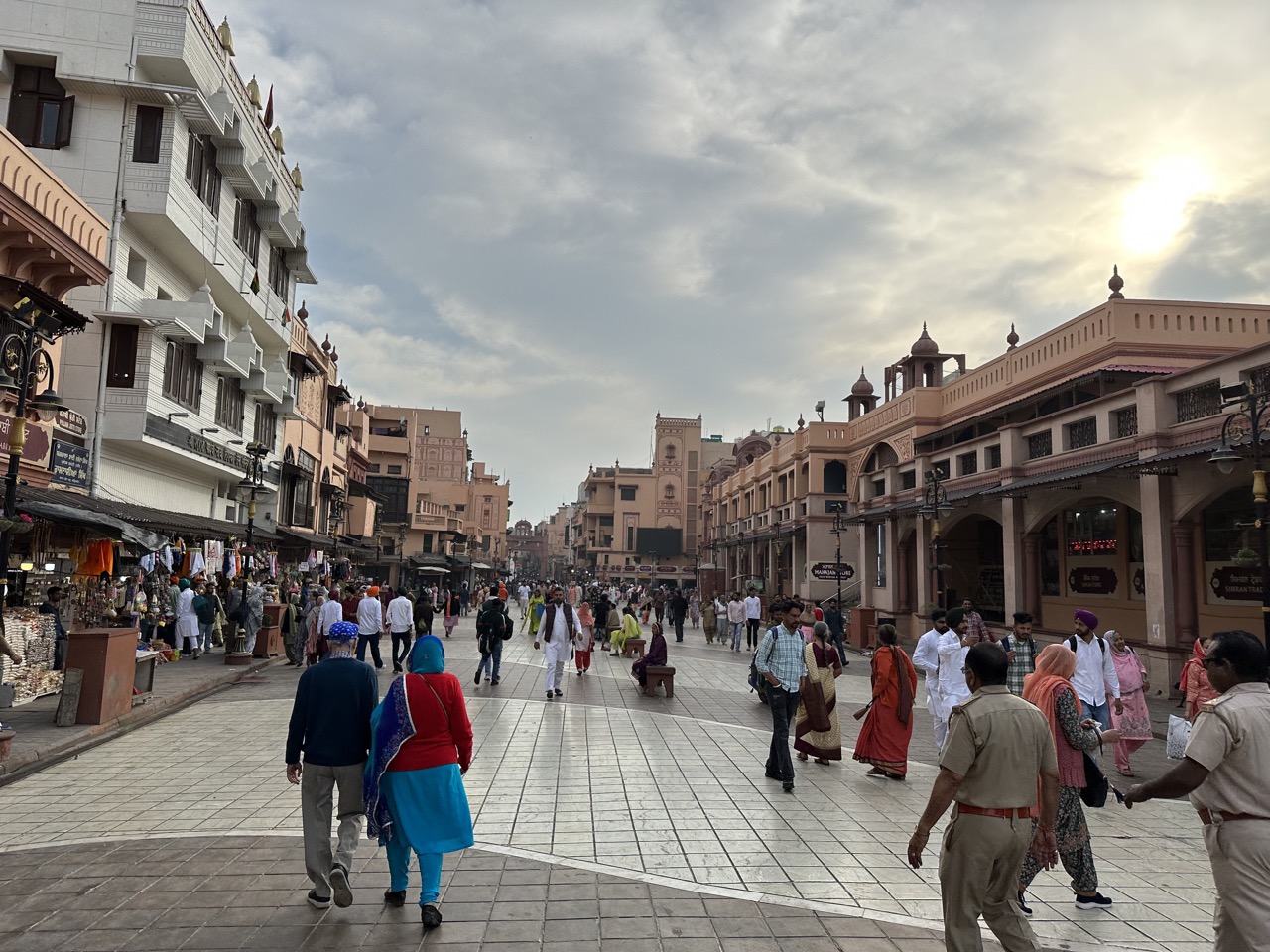
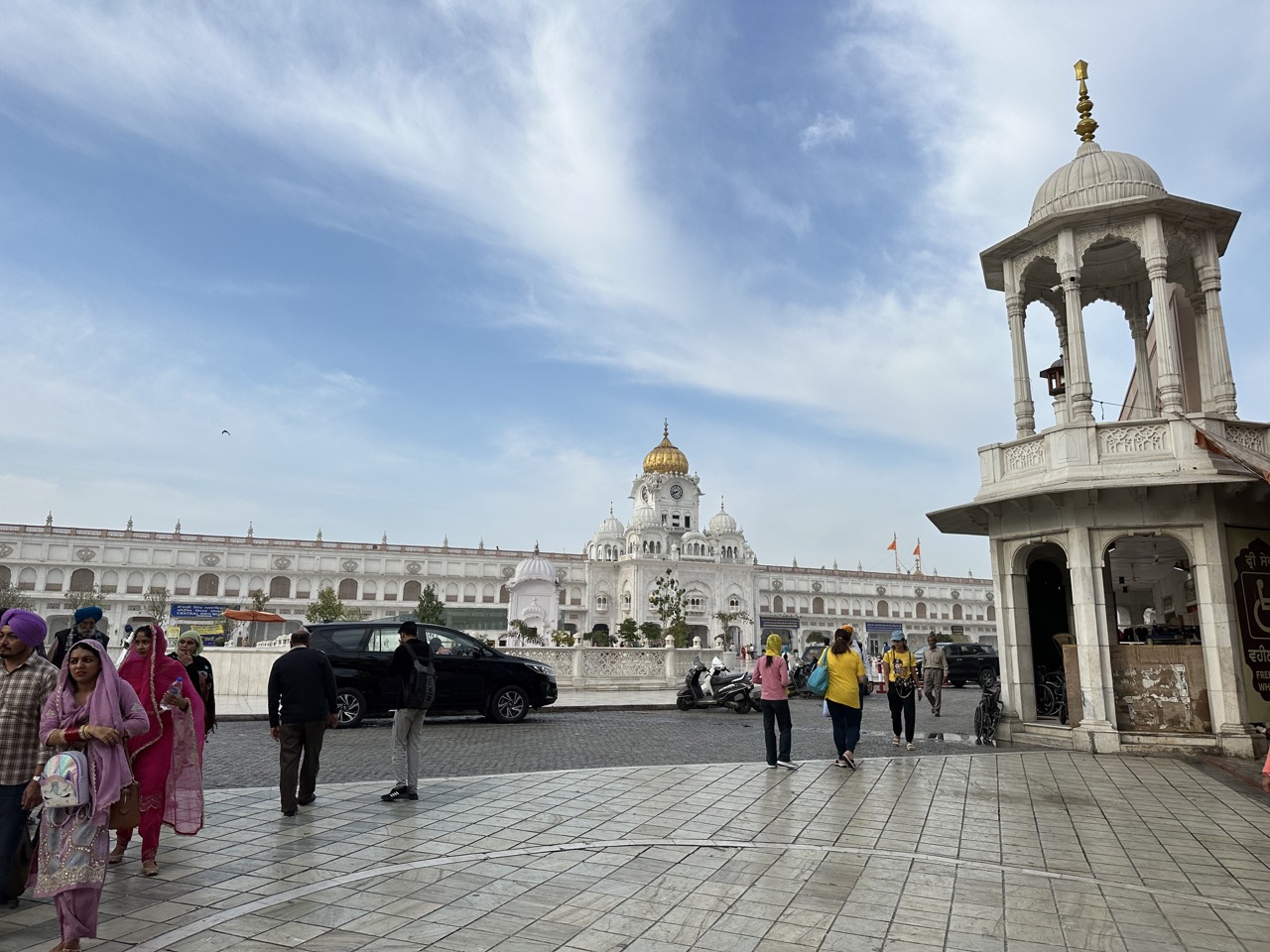
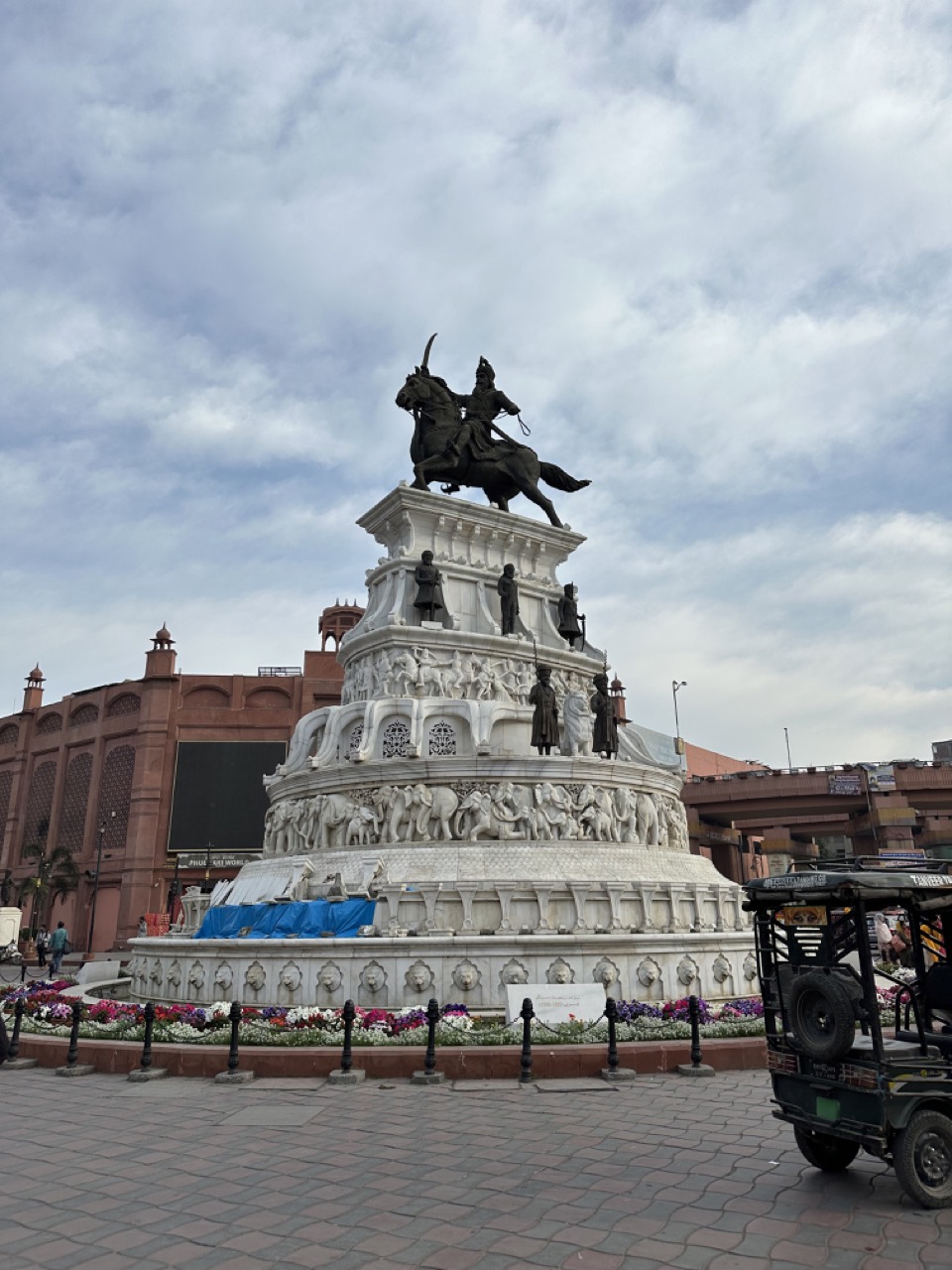
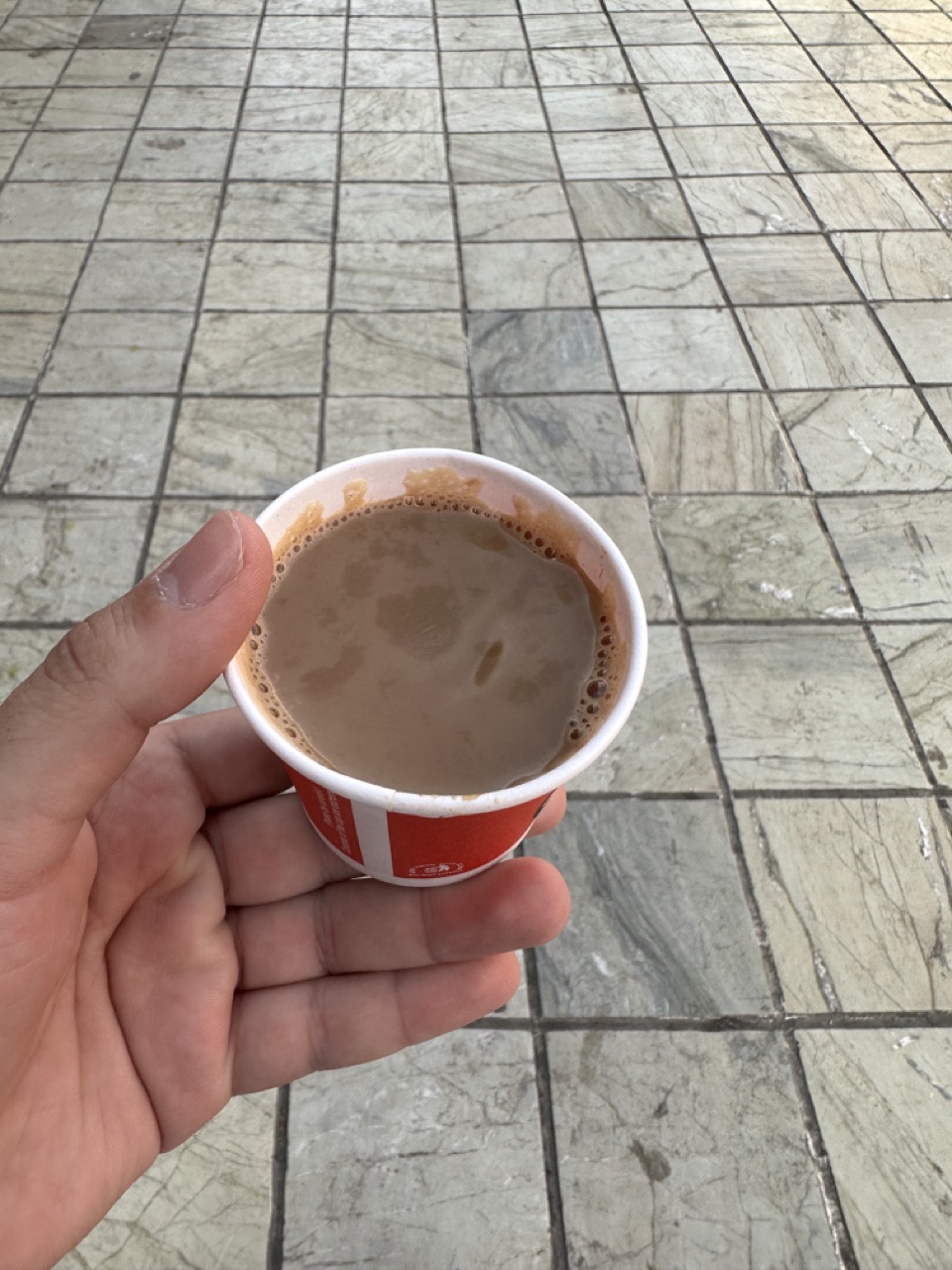
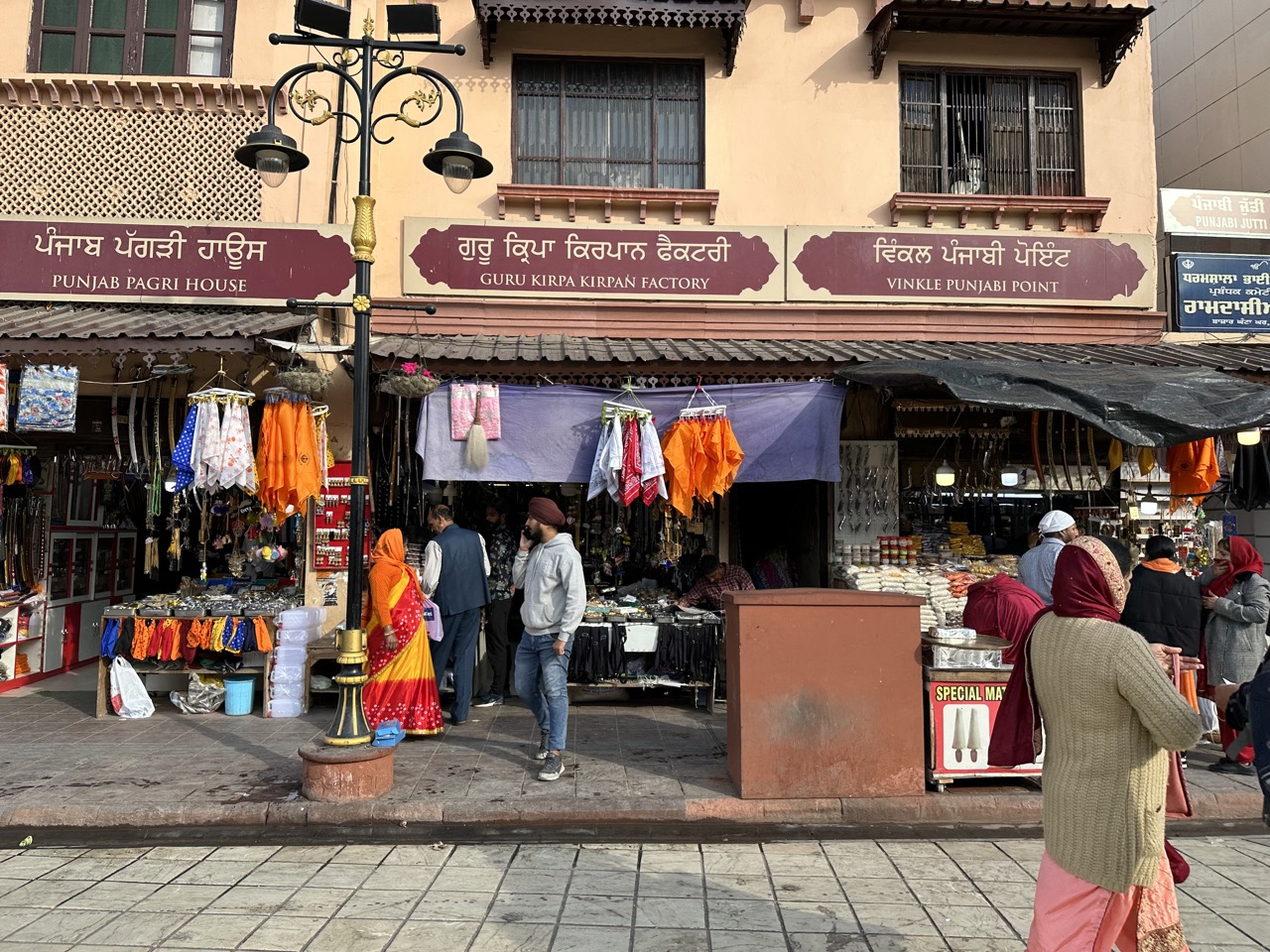
After drinking the chai I went in search of a head covering. It is mandatory for everyone to wear a head covering when inside the Golden Temple. Typically Sikh men wear turbans, as they are commanded to not cut their hair (this is one of the five Ks that they must follow, the other being a special comb, a bracelet, a sword called a kirpan, and an undergarment). I could've opted from any number of turbans, both ones that you can just slip-on and ones that you need to tie (the turban seller will help you put it on), but I instead decided to just go for the "souvenir" head covering that is very inexpensive and says Golden Temple on it. You can also borrow one from the temple for free, but that doesn't seem very hygienic.
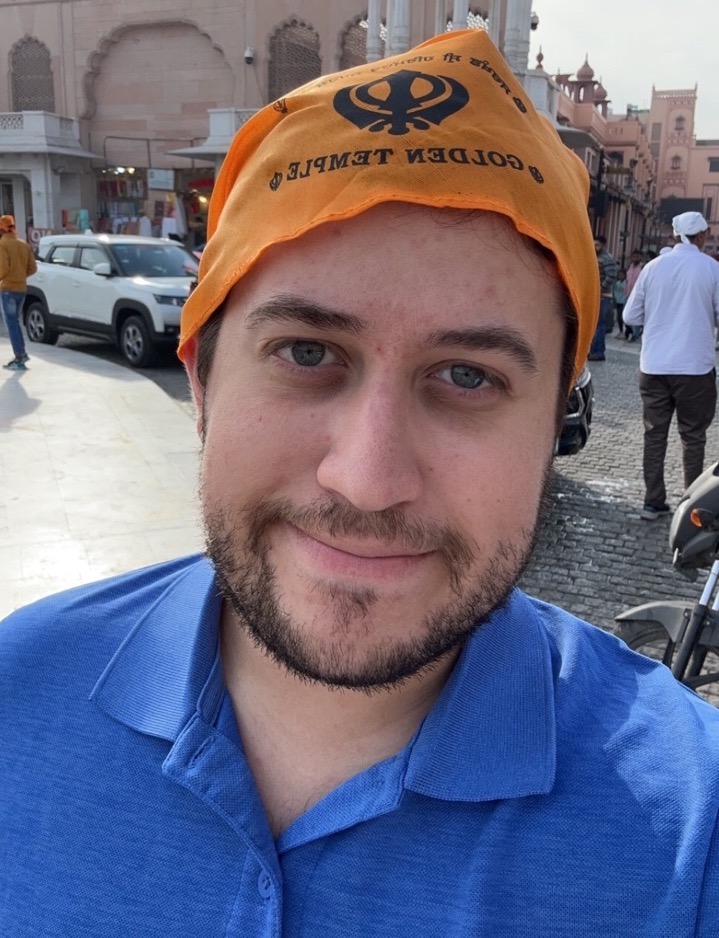
It is easy to figure out what to do if you just pause and observe what everyone else is doing. Next I took my shoes off and deposited them at the shoe checking counter. I then washed my hands at the sink, and walked through a small wading pool to wash off my feet before entering the temple.
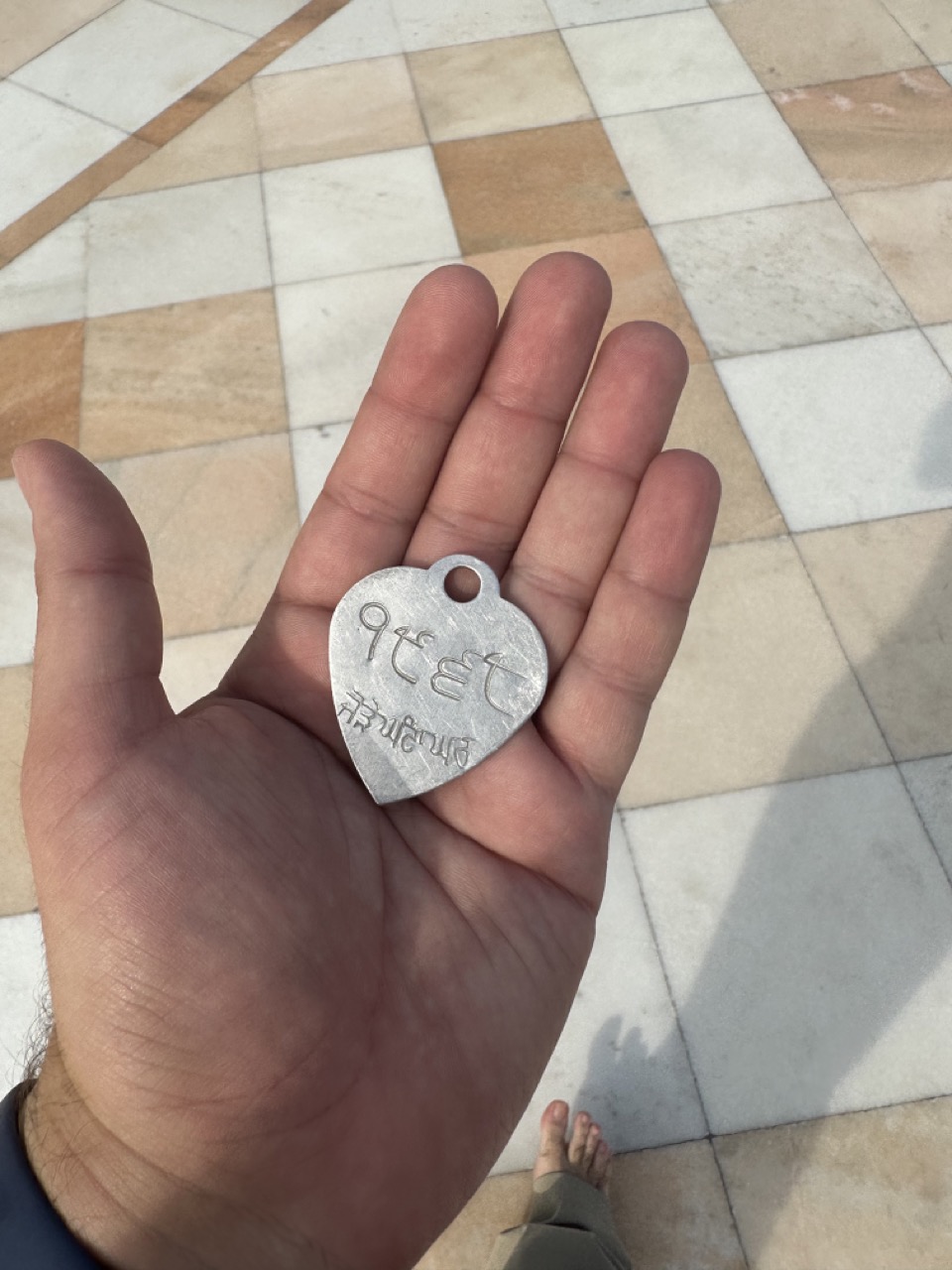
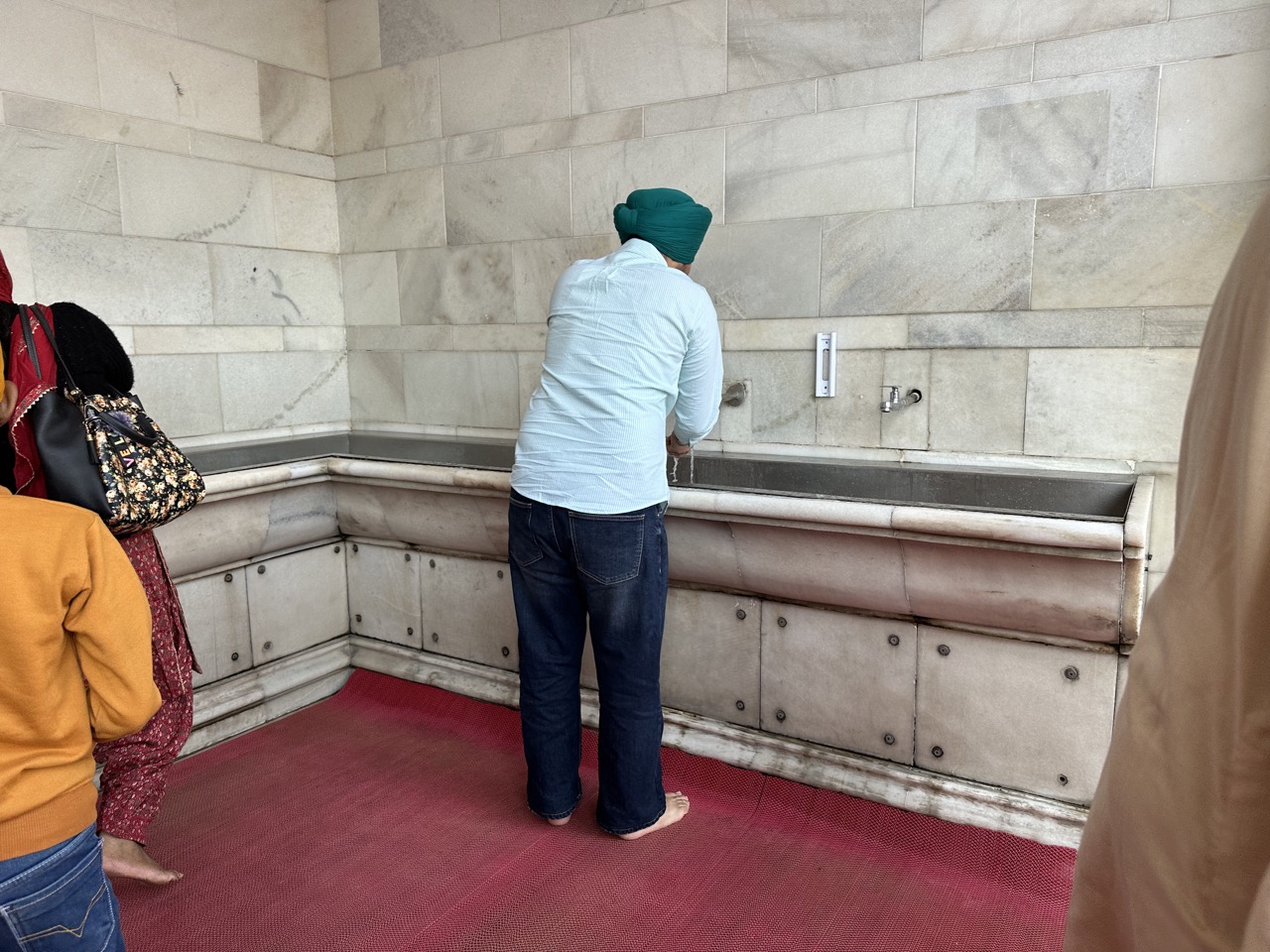
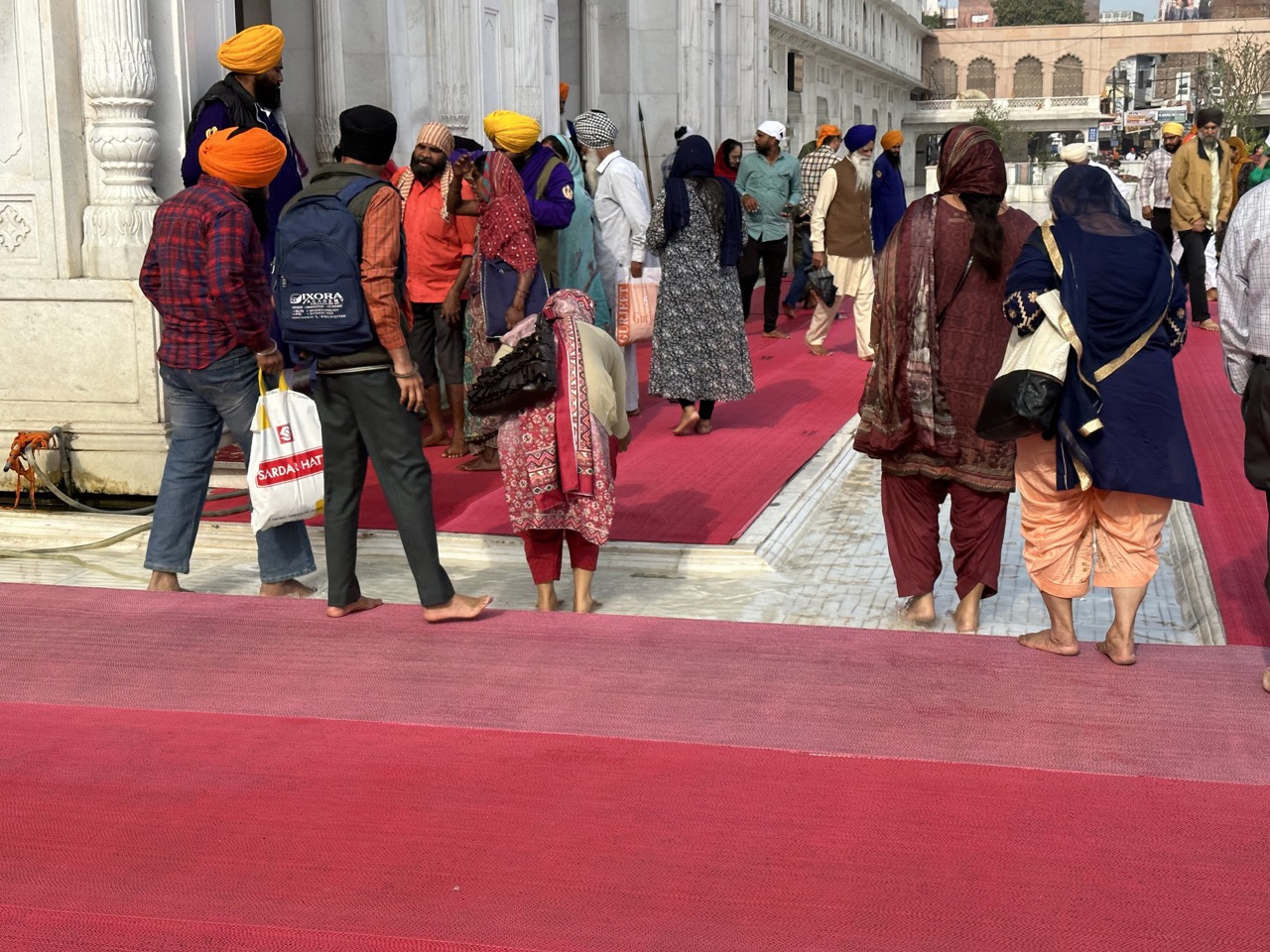
You then walk into the main section of the Golden Temple, which is an enormous ornate marble courtyard with a pool in the center, and then the Golden Temple sits in the center of that pool. In many ways it is reminiscent of the Masjid al-Haram (Grand Mosque in Mecca where the Kabba is), but on a much smaller scale. The Golden Temple is itself also built of marble, and plated in 24-karat gold. It is surrounded by the Amrit Sarovar, or Pool of the Nectar of Immortality. It is from this pool that the city Amritsar gets its name. An important Sikh pilgrimage is to swim in the pool, and there are designated swimming and showering areas (and also private areas for ladies).
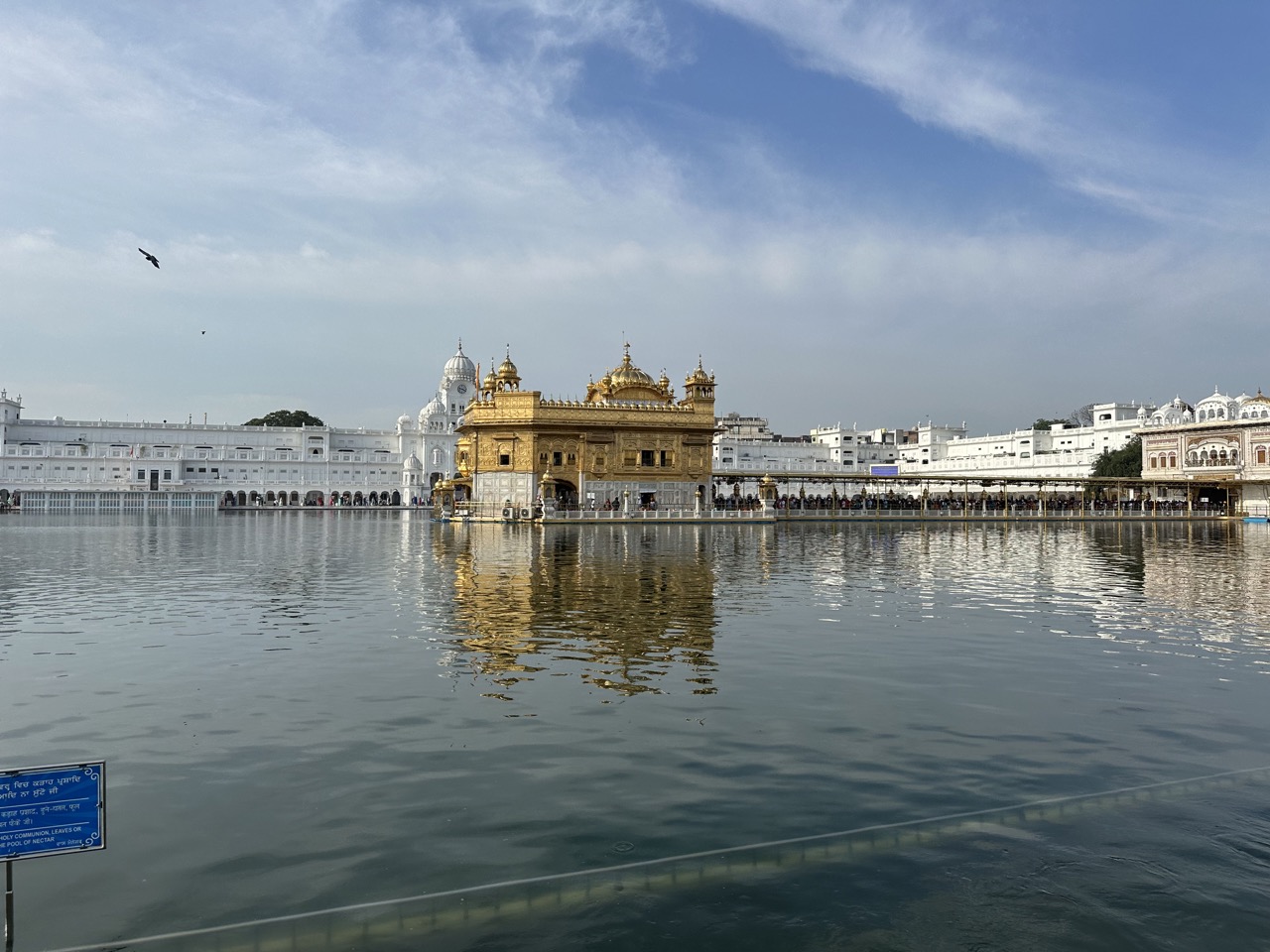
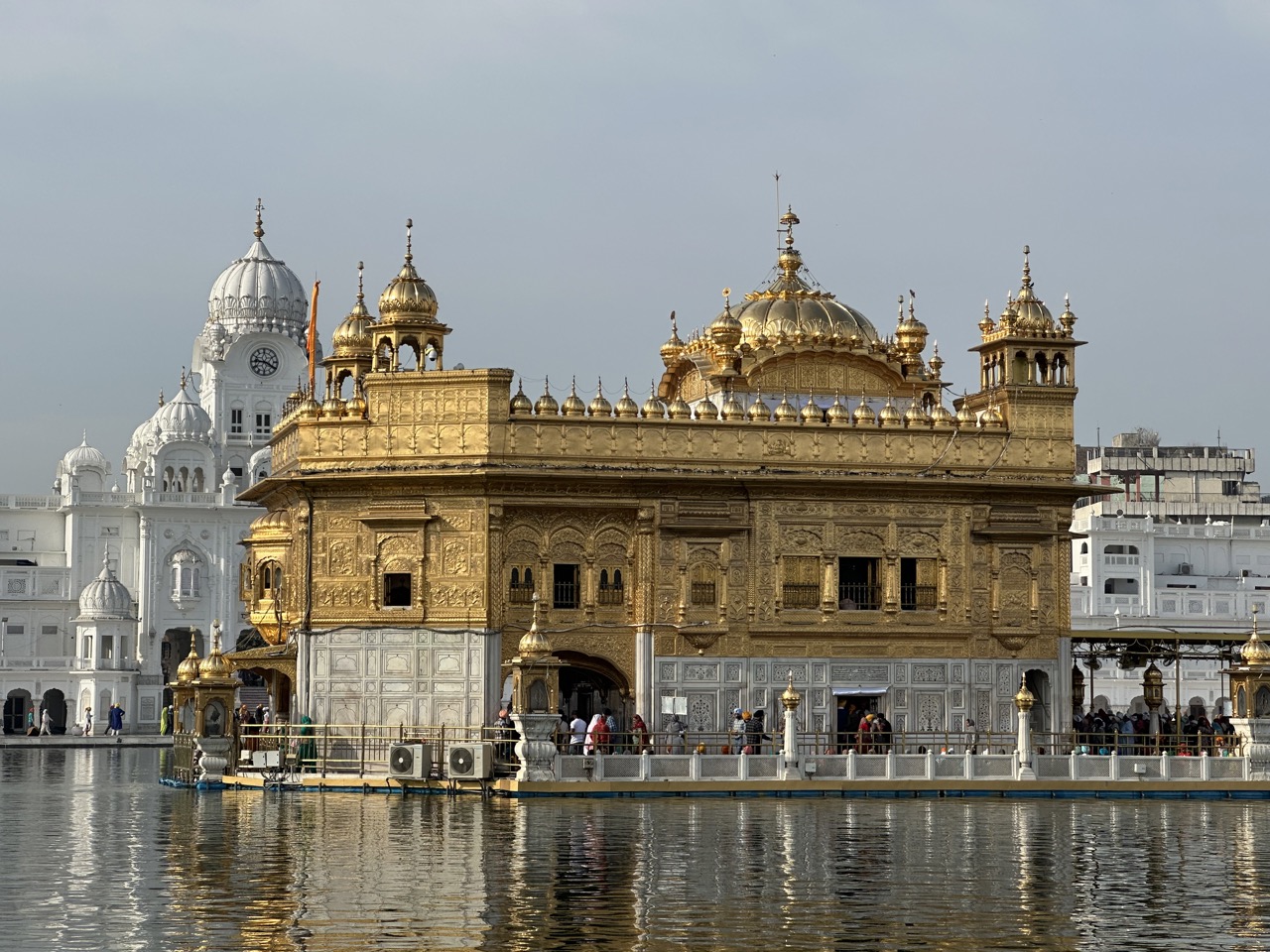
I walked around the courtyard to the back section (generally you walk clockwise, although a few people seemed to ignore this) where the langar (community kitchen) is located. All are welcome to come and eat, regardless of your faith or social standing. You enter and are handed a metal thali (plate), bowl, and spoon, and are directed to a large eating hall where you sit in long lines on thin nylon rugs. You place your plate on the ground and people come and fill it up with various dishes. They will continue to come around and you can ask for seconds of things you like. The dishes included some kind of chickpea curry, rice, a sweet hot vermicelli called seviyan kheer, chipati (bread), and some kind of dal. The bowl is for drinking water, which I did not realize at first. The nice man encouraged me to accept more food if I was still hungry, but I found the meal quite filling. After you finish eating, you take your dish to a long assembly line of men who are washing the dishes. The meal is free to all, but there are designated areas where you can donate any amount of money you wish.
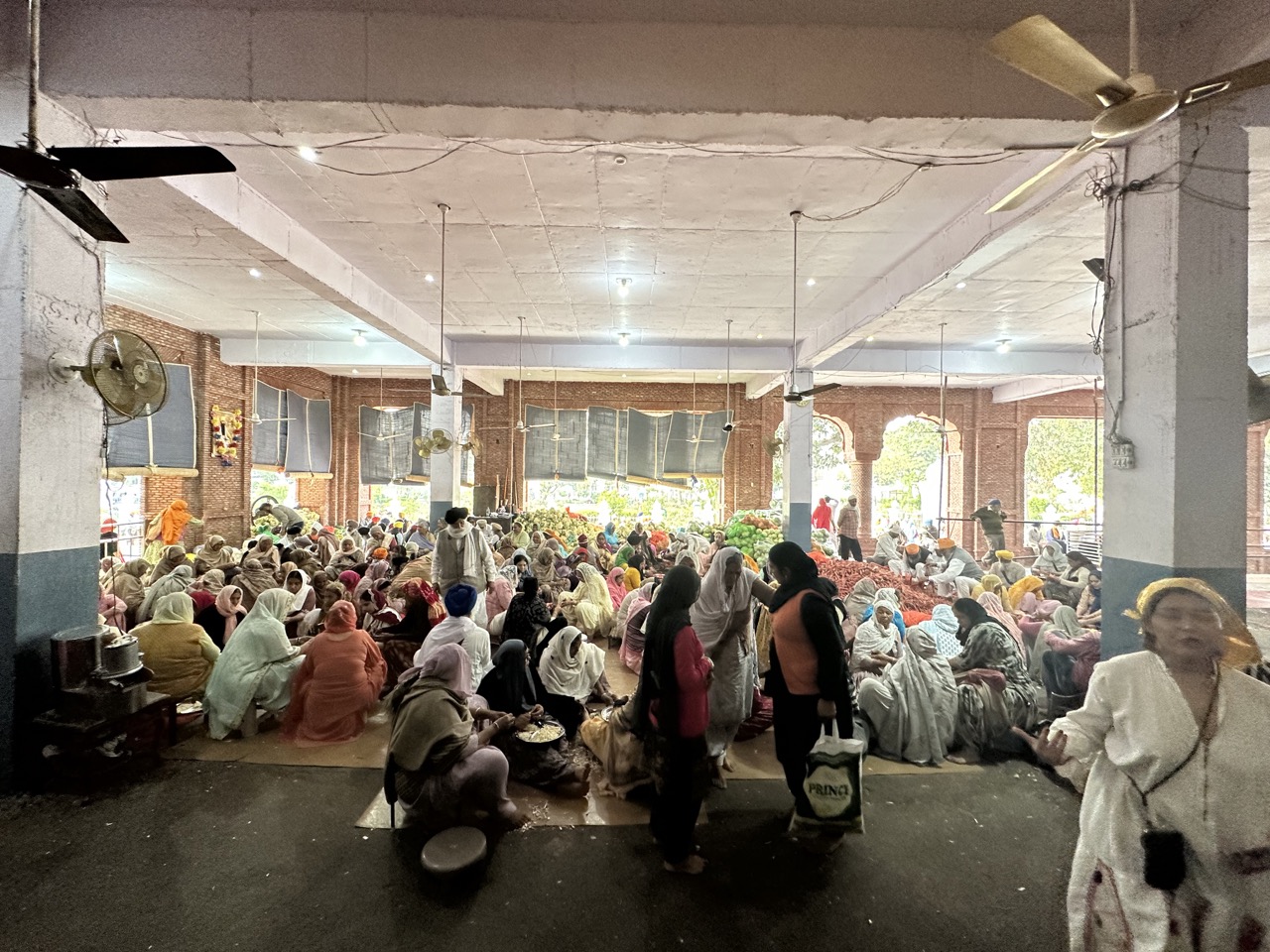
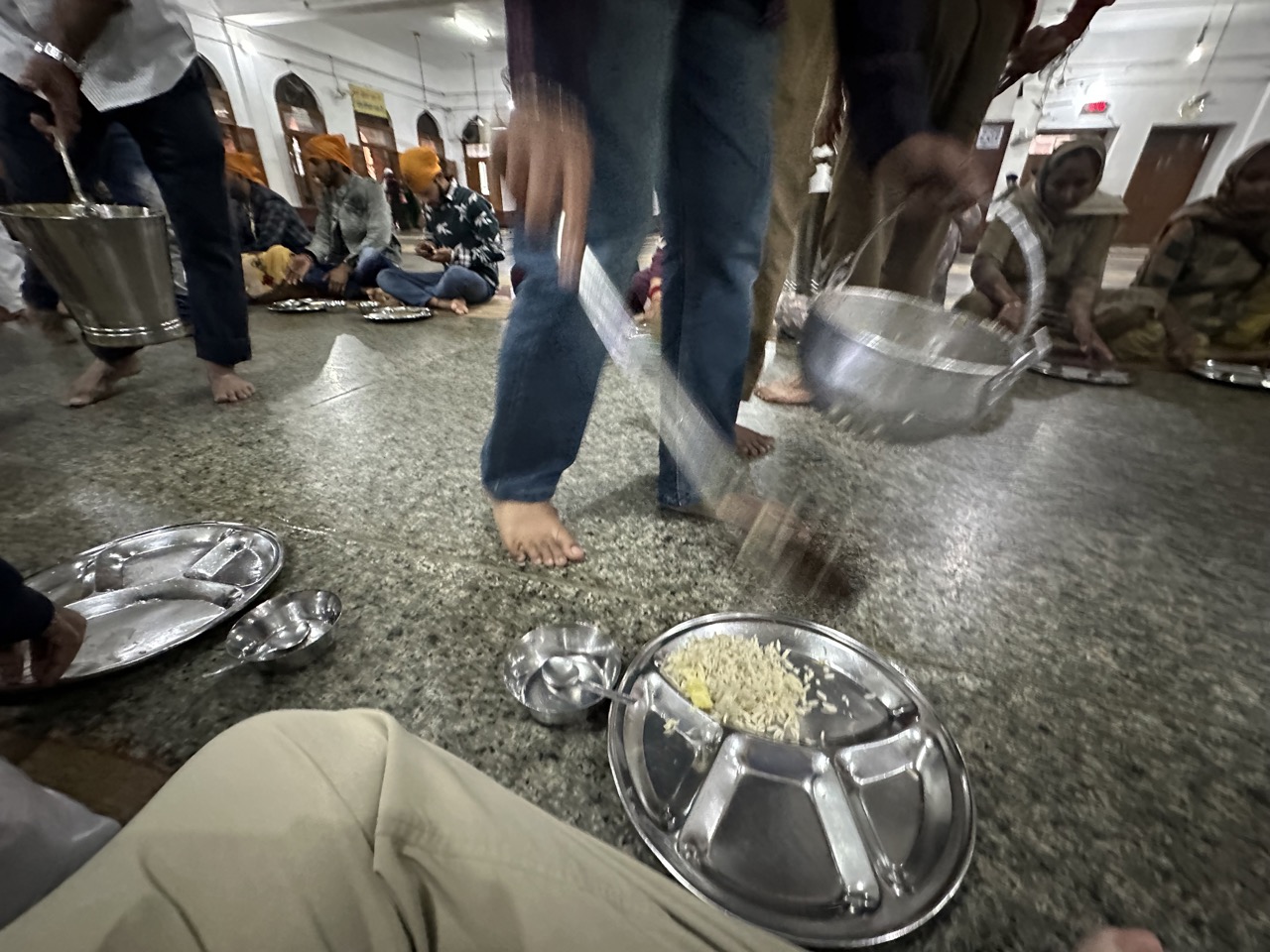
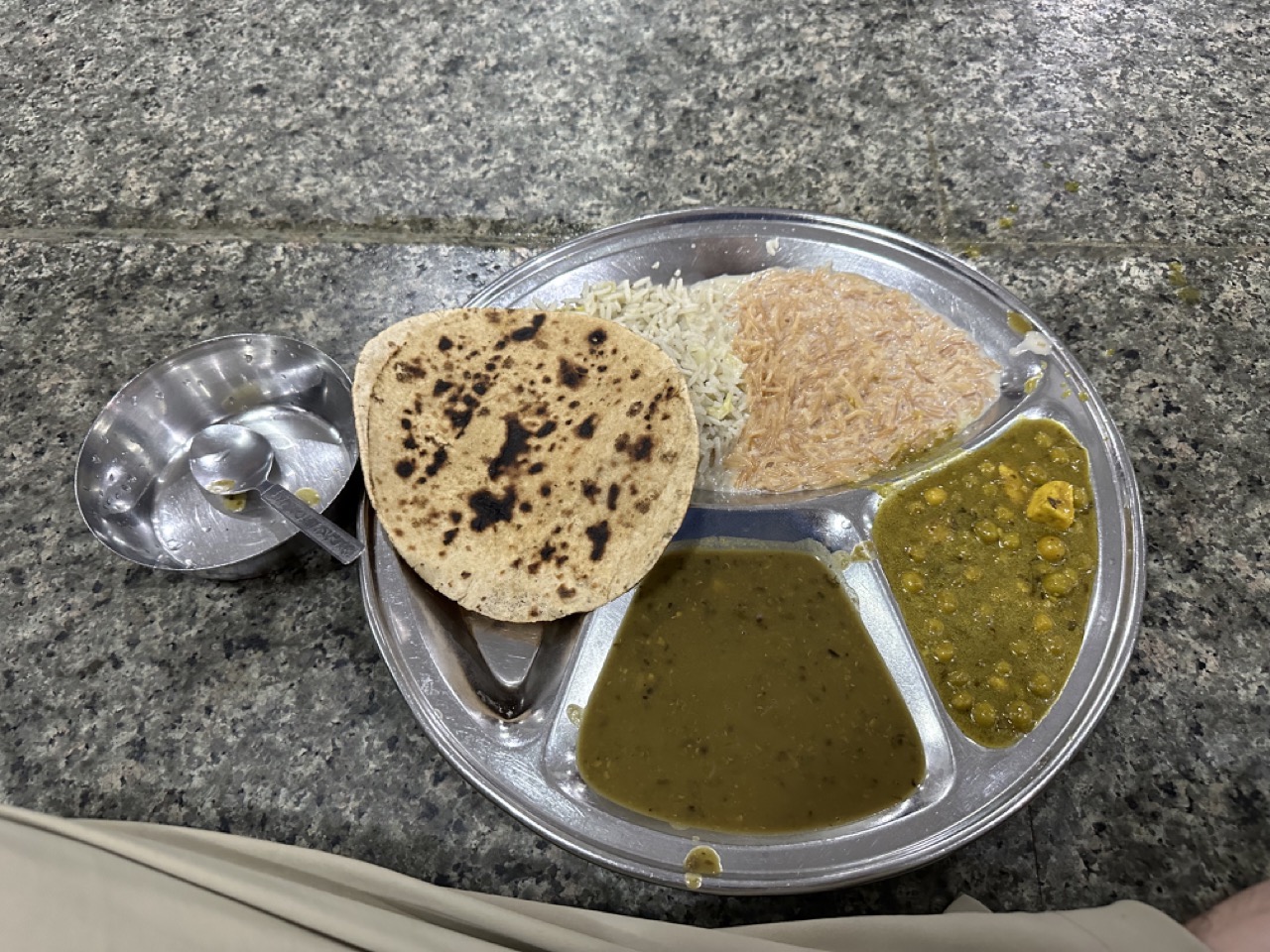
After eating I headed over to the Old Town Hall which is home to the Partition Museum, which was a lengthy gallery discussing the Partition of the British Raj into the Dominions of India and Pakistan. Photos weren't allowed in the gallery, but the content was incredibly interesting. Probably the most important thing I learned was that the partition was made very hastily: the Indian side preferred independence without a partition, but the Pakistan side preferred independence with a partition. The British appointed Cyril Radcliffe, a lawyer who had never been to India before, to draw the boundary, with the idea that he would be unbiased. He was given only 5 weeks to come up with the plan, which split up the provinces of Punjab and Bengal, assigning West Punjab and East Bengal to Pakistan. The new boundary wasn't even announced until a couple days after the countries were granted independence, essentially so the British would not have to deal with the repercussions of the mass migrations that were to follow.
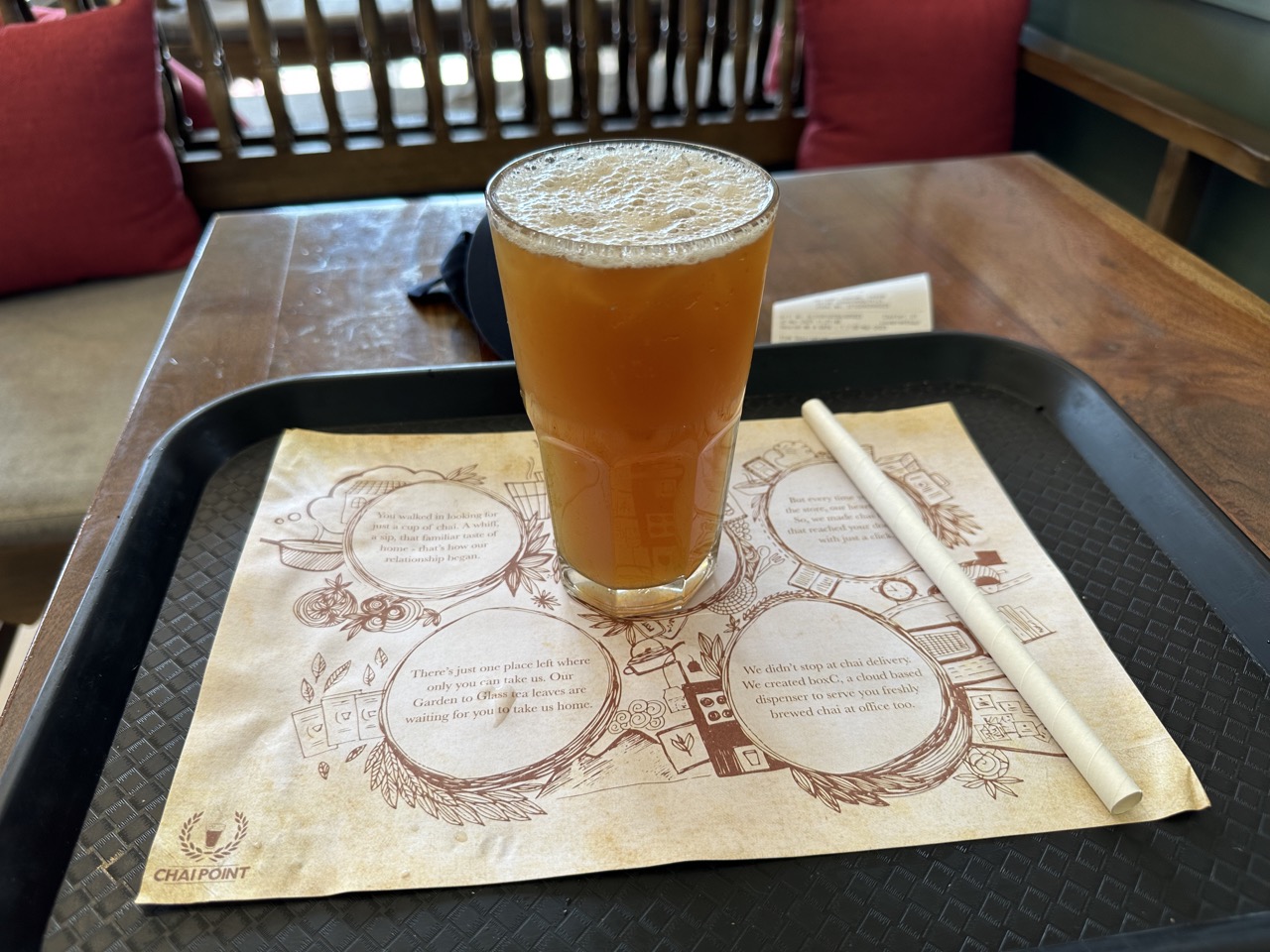
After the museum I went to Brother's Dhaba, a restaurant located across the street and also next to where I ate dinner the previous night. I had another thali, this was a bigger one that came with a larger assortment of dishes including dal, paneer masala, chickpea, curd, rice, and some naan. It was way too much food for me. I also had a makhaniya lassi, an Amritsari specialty which is where they put a big chunk of butter in the lassi.
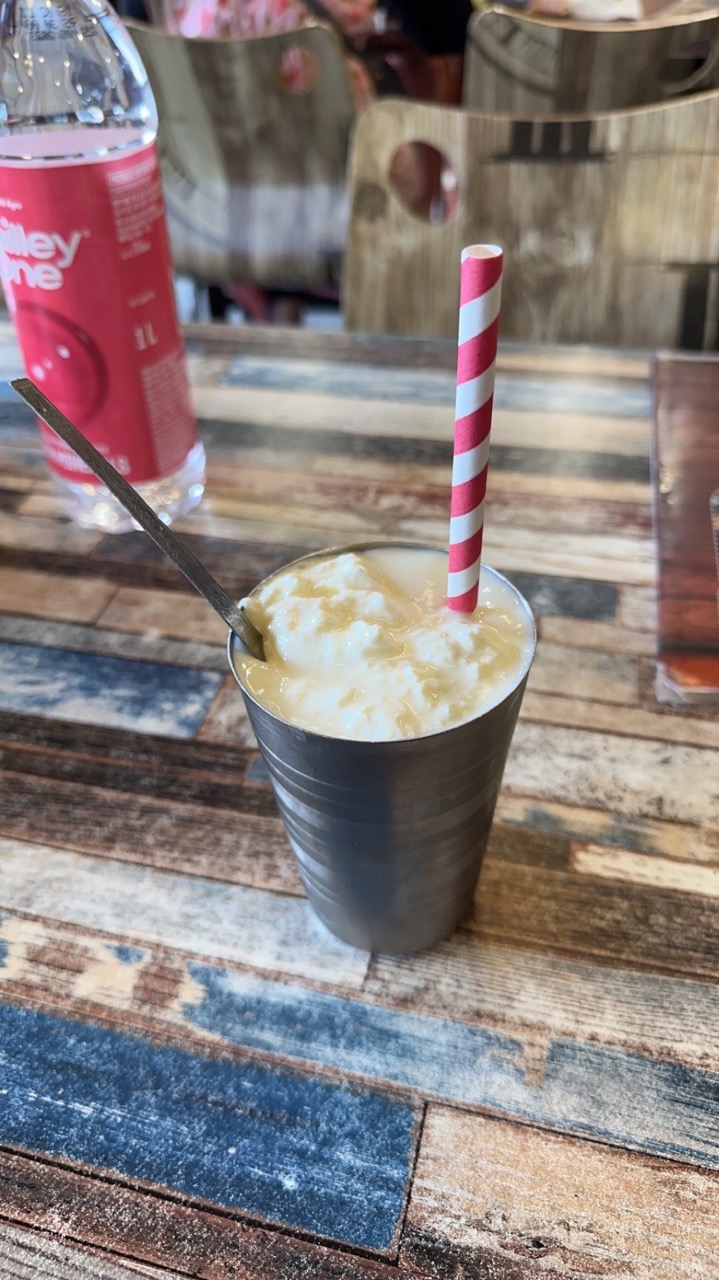
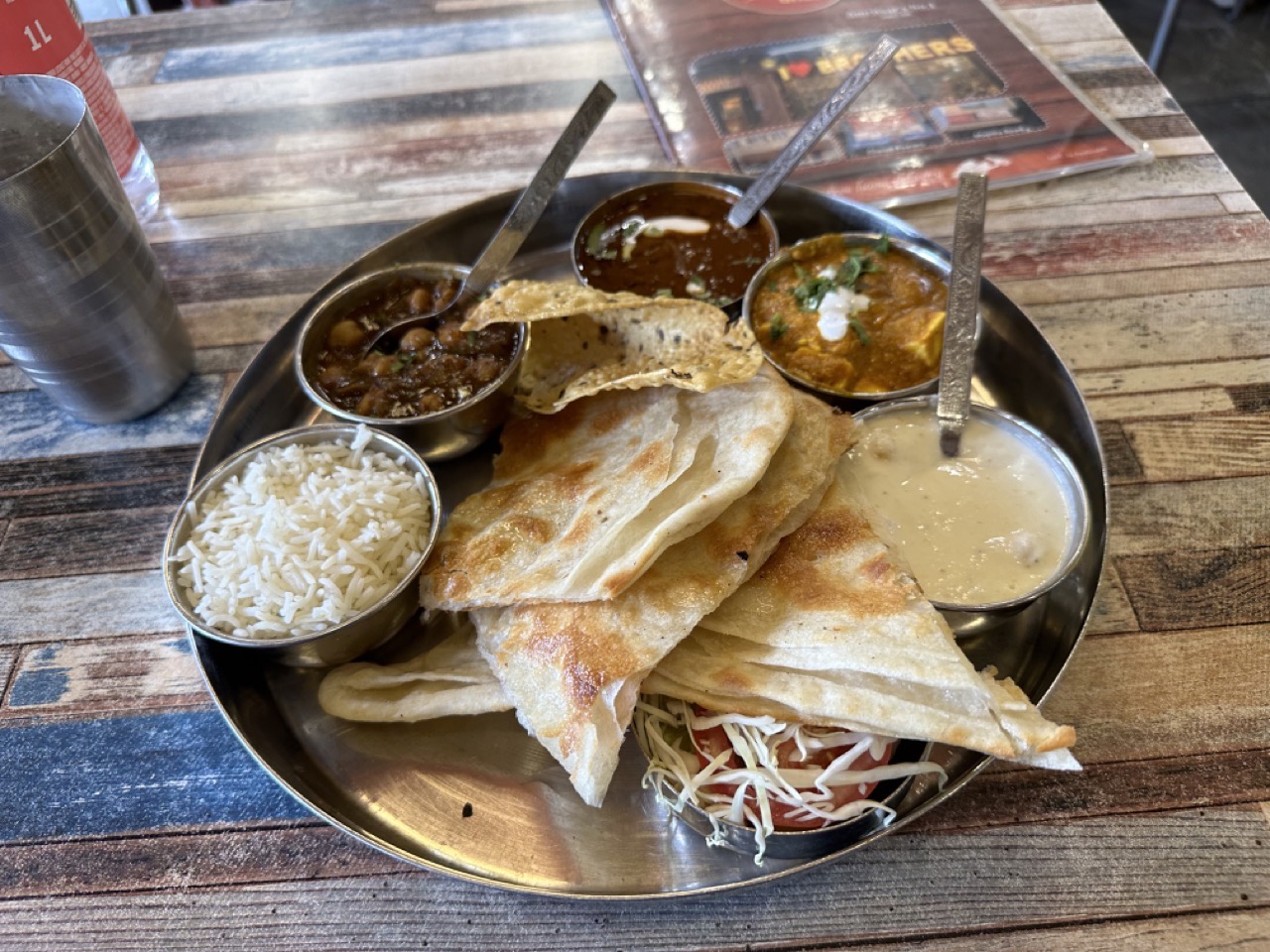
After eating I tried to return to the Jio store I visited last night. The same guy was there who turned me away the night before. After he realized I was a foreigner he decided he didn't want to deal with me, and he sent me across the street to an Airtel store (Airtel being another major Indian cell provider). In the Airtel store they wouldn't sell me a sim card unless I brought an Indian person to the store with me to be a "friend", so I had to leave empty handed for the second day in a row, which was very frustrating because I was yet to find a way to book bus or train tickets without an Indian phone number.
I headed back to the hotel where I was met by a driver the hotel arranged to take me to the border with Pakistan. Every evening there is a border closing ceremony at the Attari-Wagah Border Zone. The ceremony doesn't really start in full until around 5pm but we had to leave around 2:15pm due to concerns about traffic and lines. It took around 45 minutes to get to the border. As a foreigner, I was given special VIP treatment and got to skip the long security line, and got to sit in the special reserved VIP section right in the front and closest to the border.
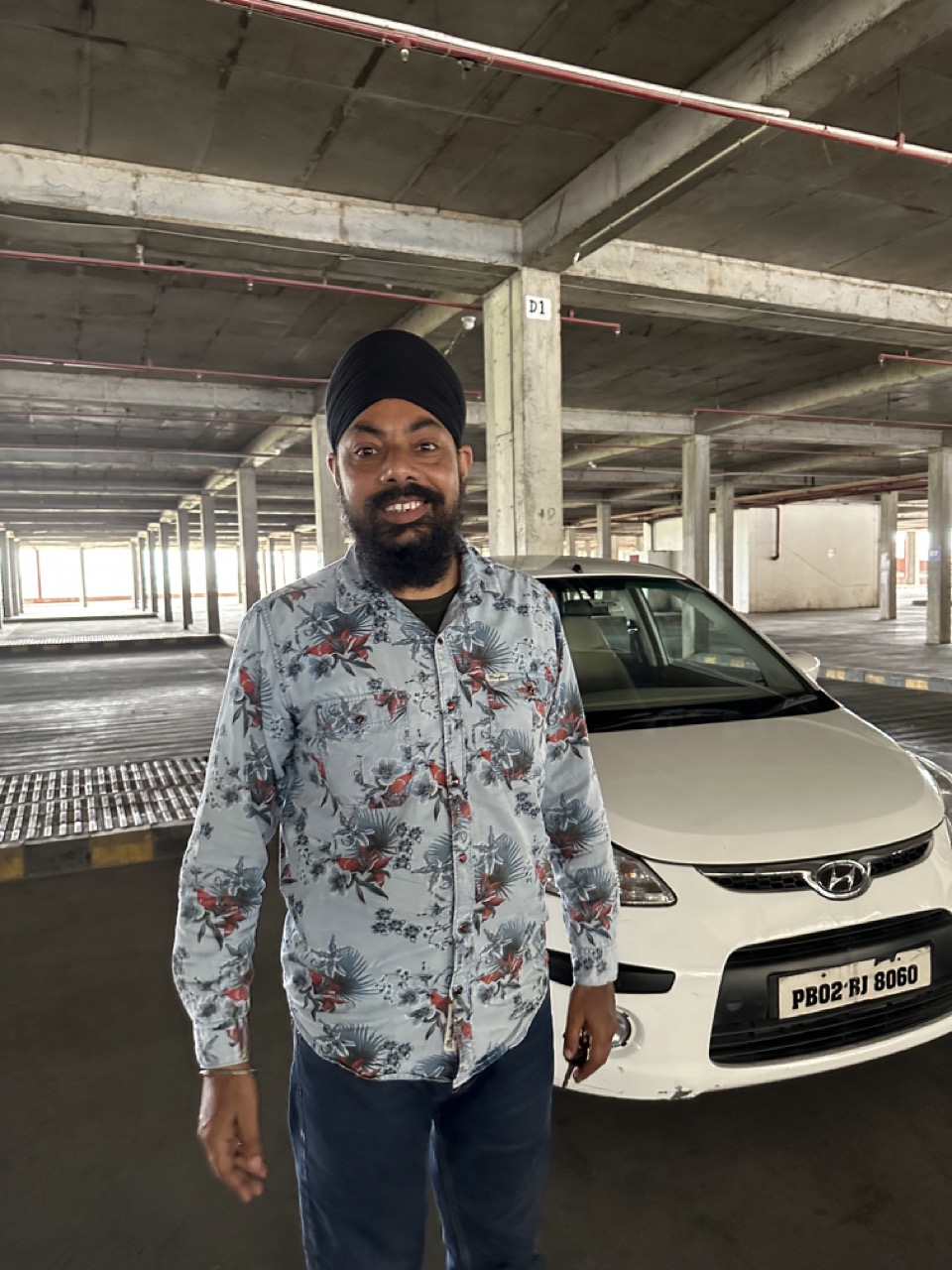
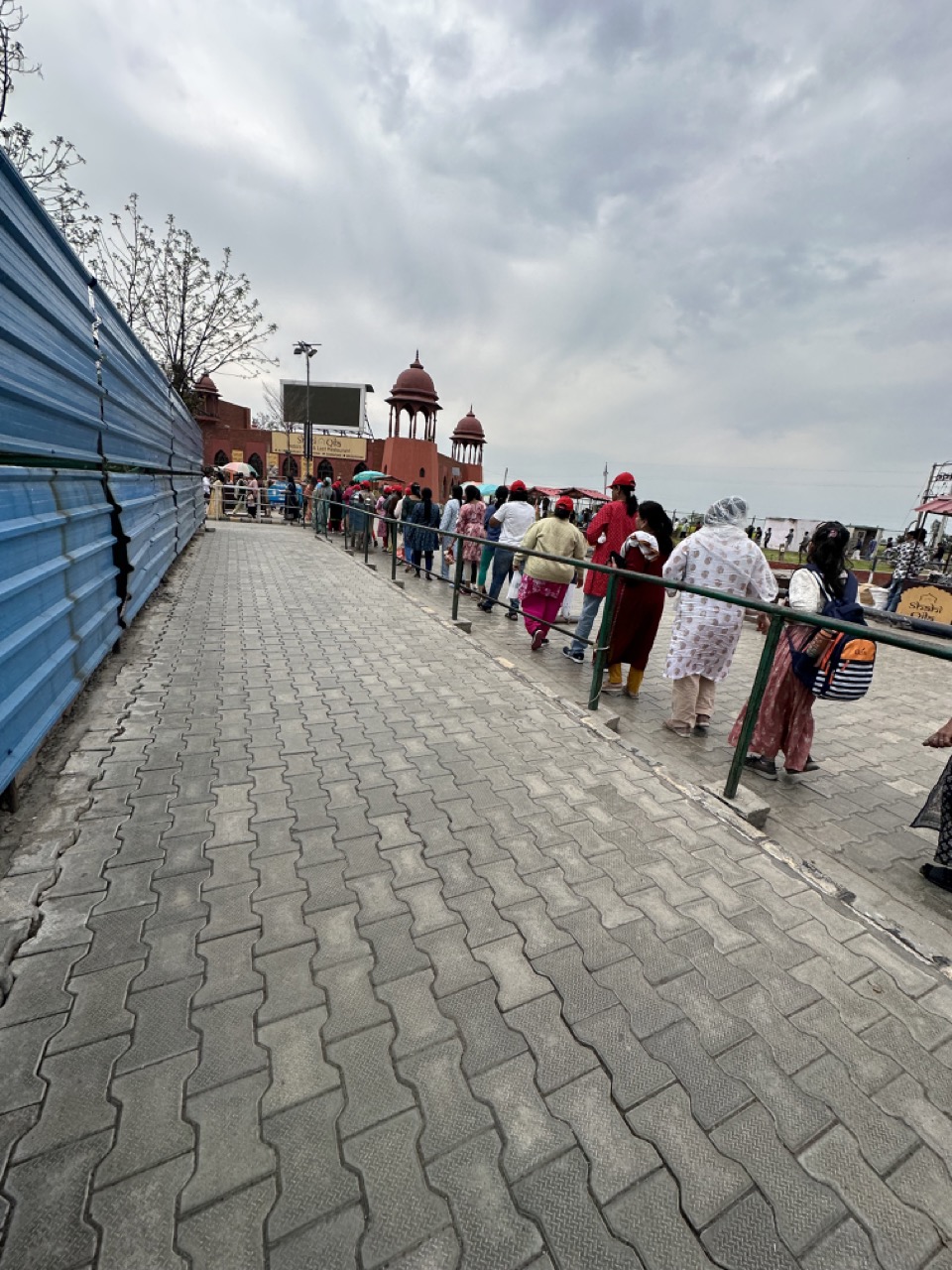
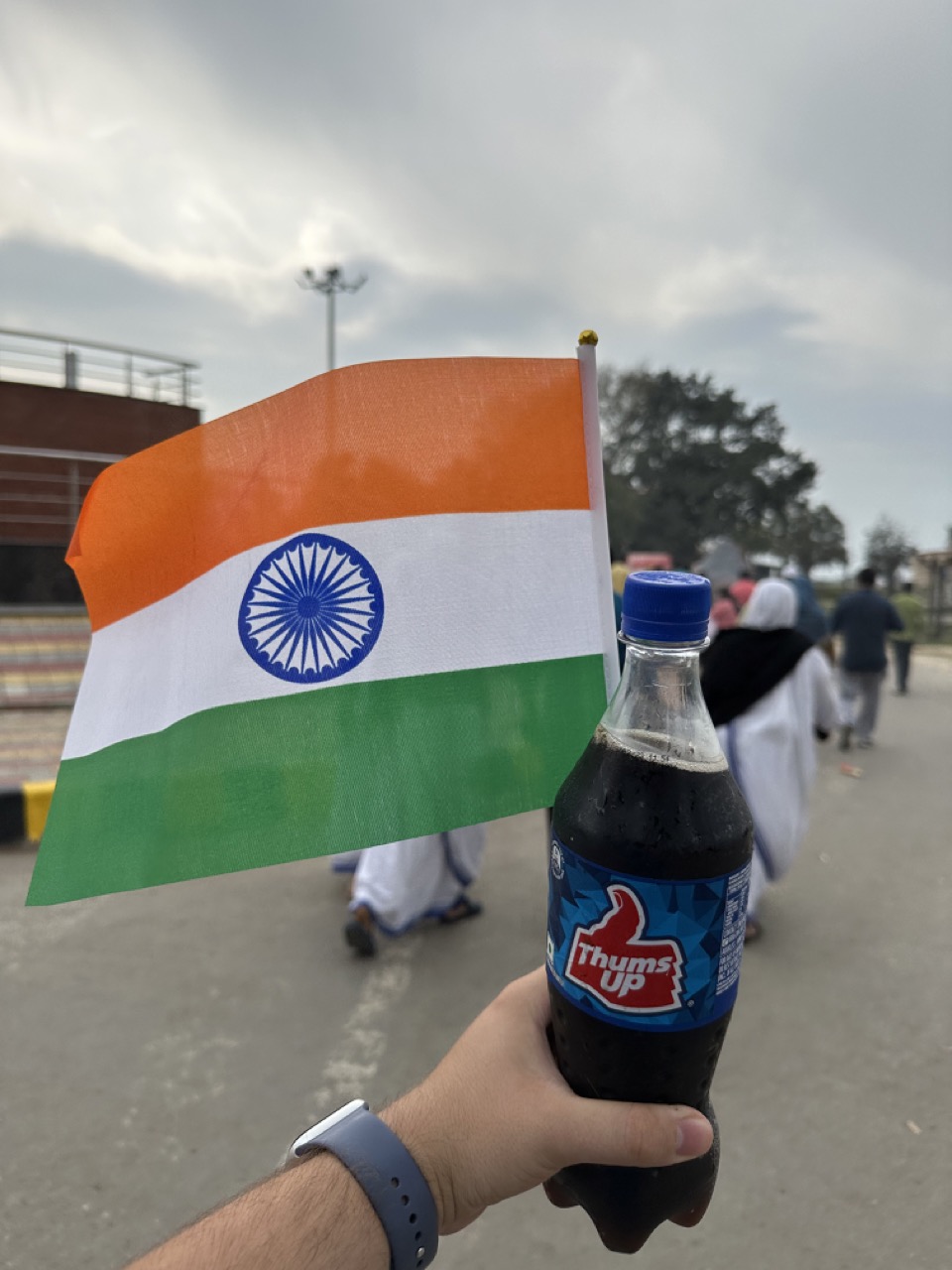
You enter the border complex and walk through a large vomitorium into what appears to be half of a stadium, with enough seating for thousands of spectators. At the top is the word "INDIA" and a large photo of Gandhi. On the other side is a much smaller stadium that says "Pakistan" with a photo of Pakistani founding father Muhammad Ali Jinnah. It is almost like Jinnah and Gandhi are staring each other down across the border. Pakistan may have a smaller stadium, but they have a much bigger flag. (There was a huge flagpole on the Indian side but no flag was flying). I walked over and sat in the foreigner section, in one of the closest seats to the border. Behind me coincidentally were some people from Ohio who noticed my Michigan hat.
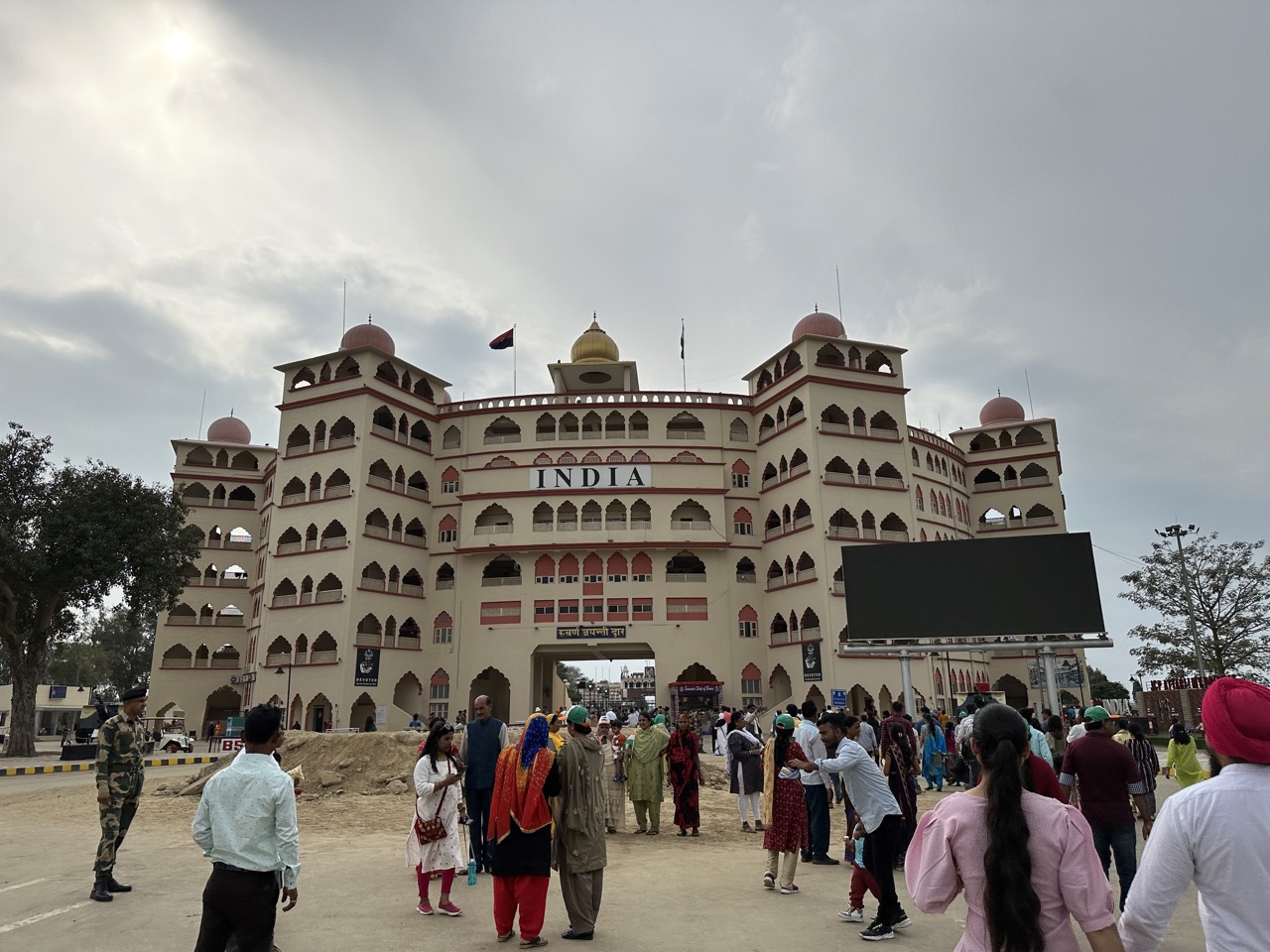
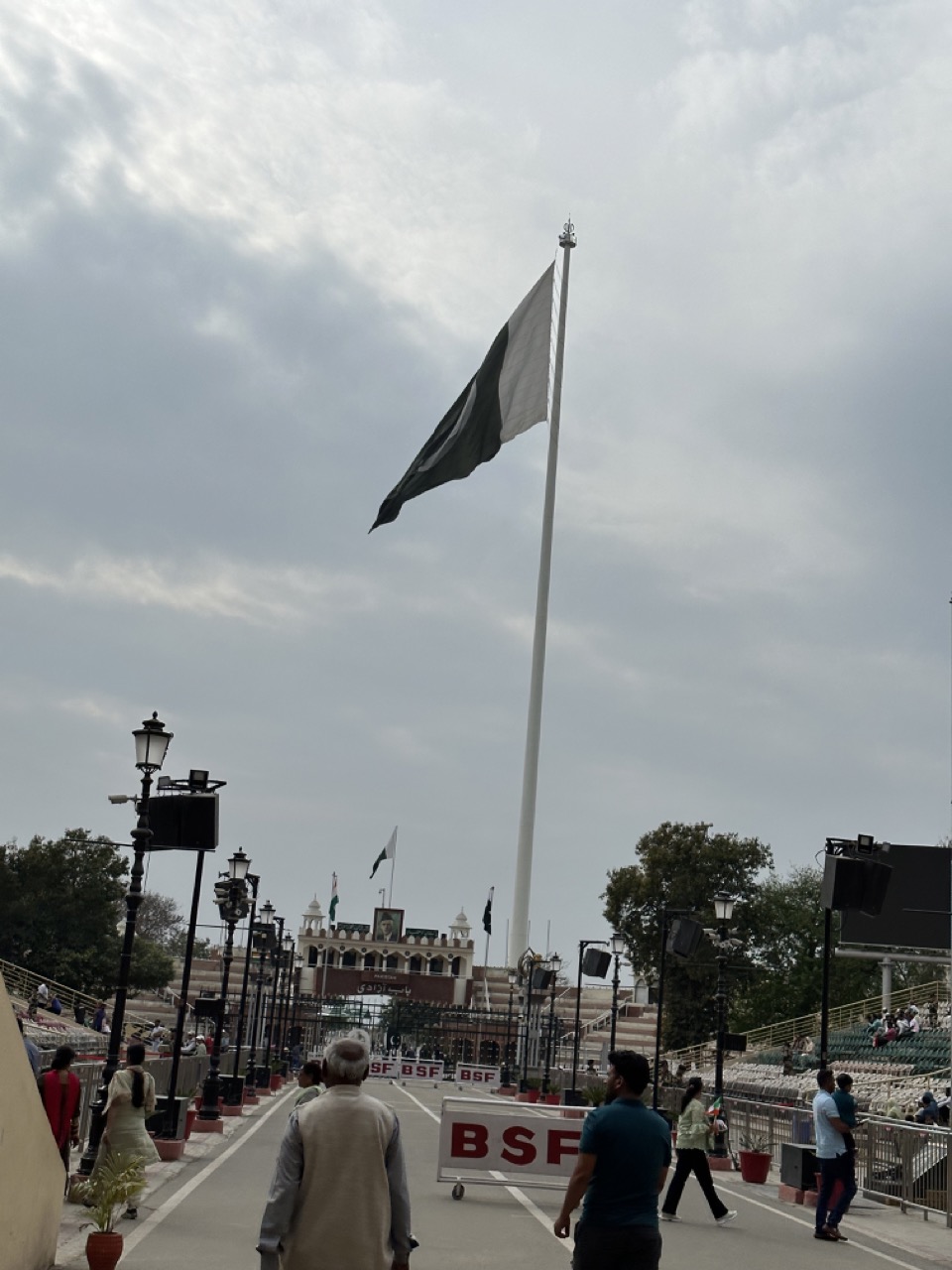
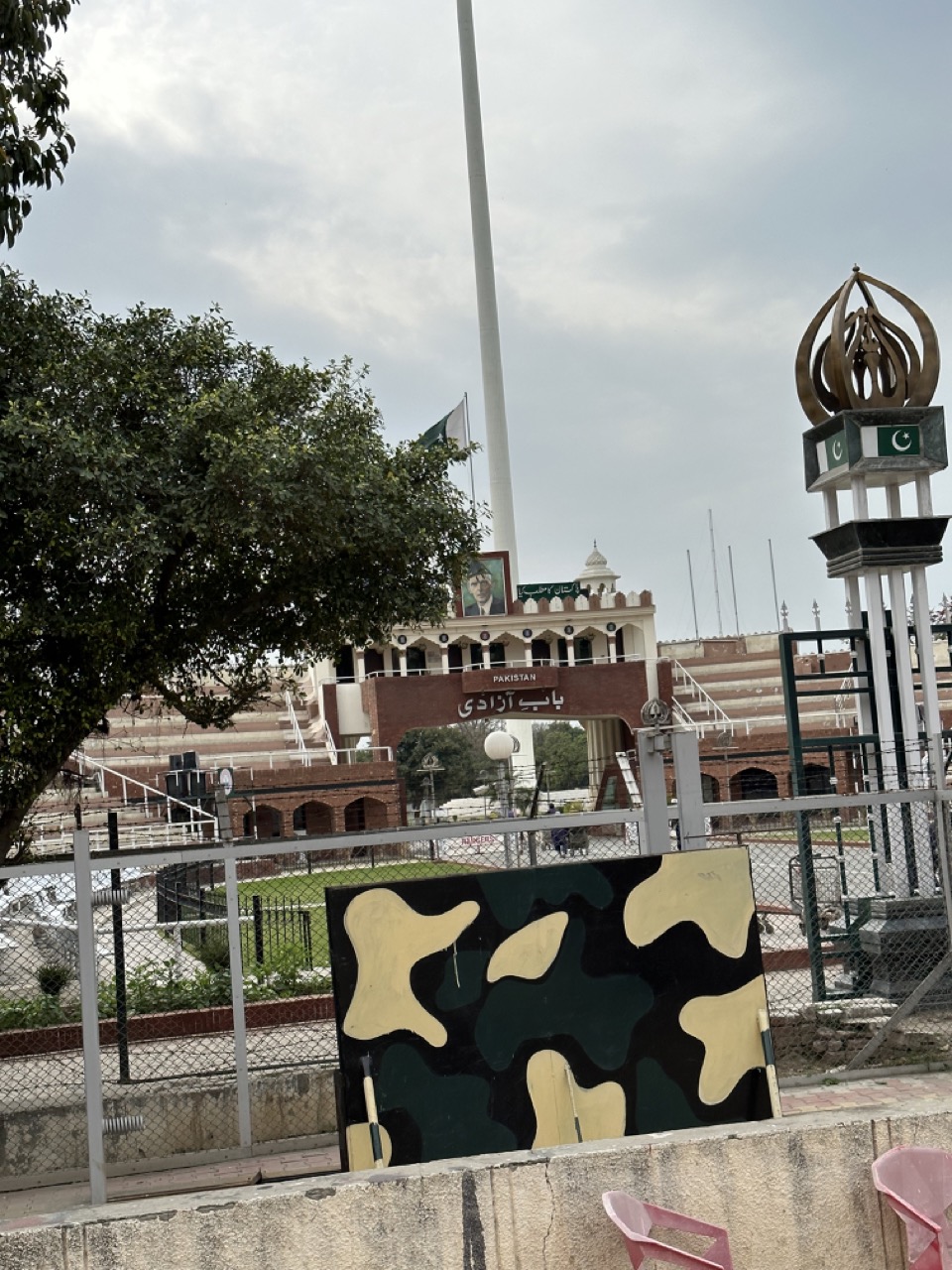
While we were sitting there, the border was still open and operational, and people were actually crossing it. I could see their passports, there were Americans, Canadians, Indians, Pakistanis, and even Koreans crossing while we sat there waiting for the ceremony to start.
After a while they started playing a promotional video for the Indian Border Security Force. Then they started playing some Bollywood music that I didn't know, but it was very popular among the locals. They invited a large group of women to stand in a line and take turns running down the road waving the Indian flag, and then they invited all the women in attendance to come down and dance to the Bollywood music. After that was finished, one officer who had a microphone and was "MCing" repeatedly was trying to get the crowd energized, leading chants of "Jai Hind" and "Hindustan Zindibad" over and over again. Meanwhile on the Pakistan side, they had finally started to draw a small crowd, and they had their own drummers and dancers, and were trying to drown us out by chanting "Pakistan Zindibad" and being louder than us. They had only a fraction as many people and so they didn't stand much of a chance in the noise competition.
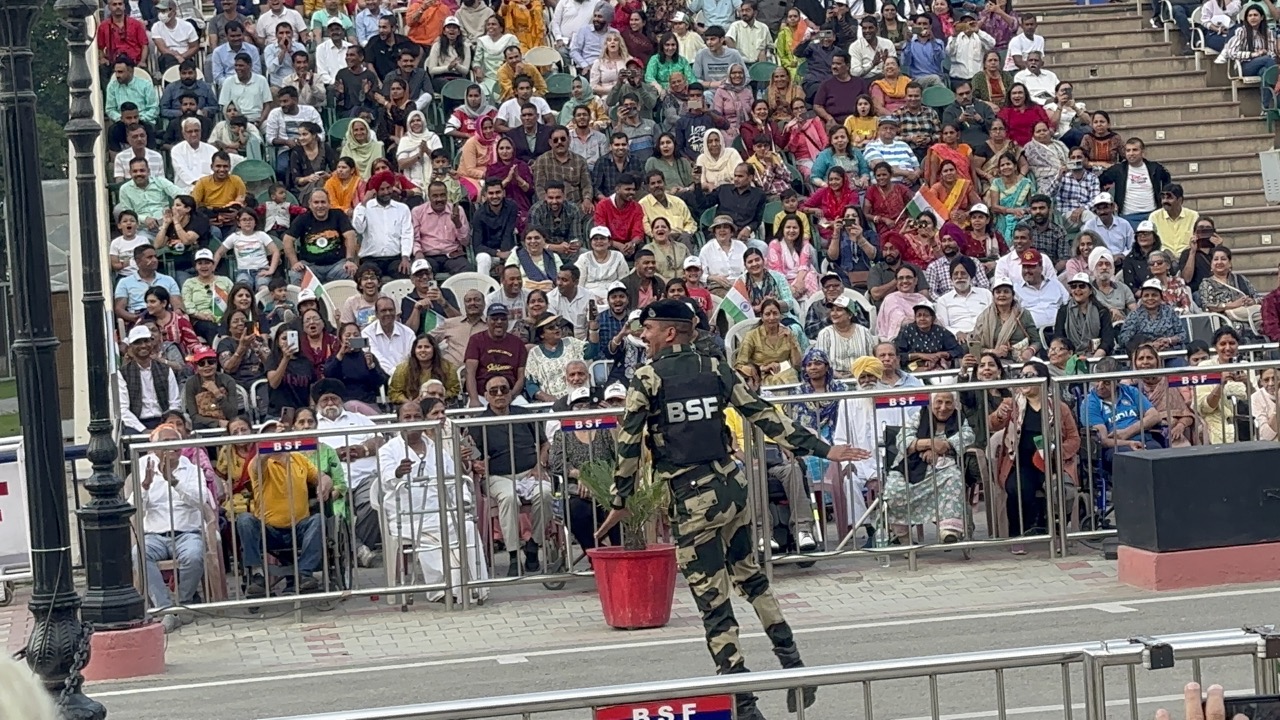
Next, a series of trumpeters appeared on balconies on both sides, and they competed to see who could hold notes longer, as soldiers wearing ceremonial uniforms with ridiculous head adornments began marching towards the border, raising their feet up above their shoulders while doing so. The trumpeters were relieved, and replaced by guys who had to continuously yell for longer than their counterpart across the border, as more guards marched down the street.
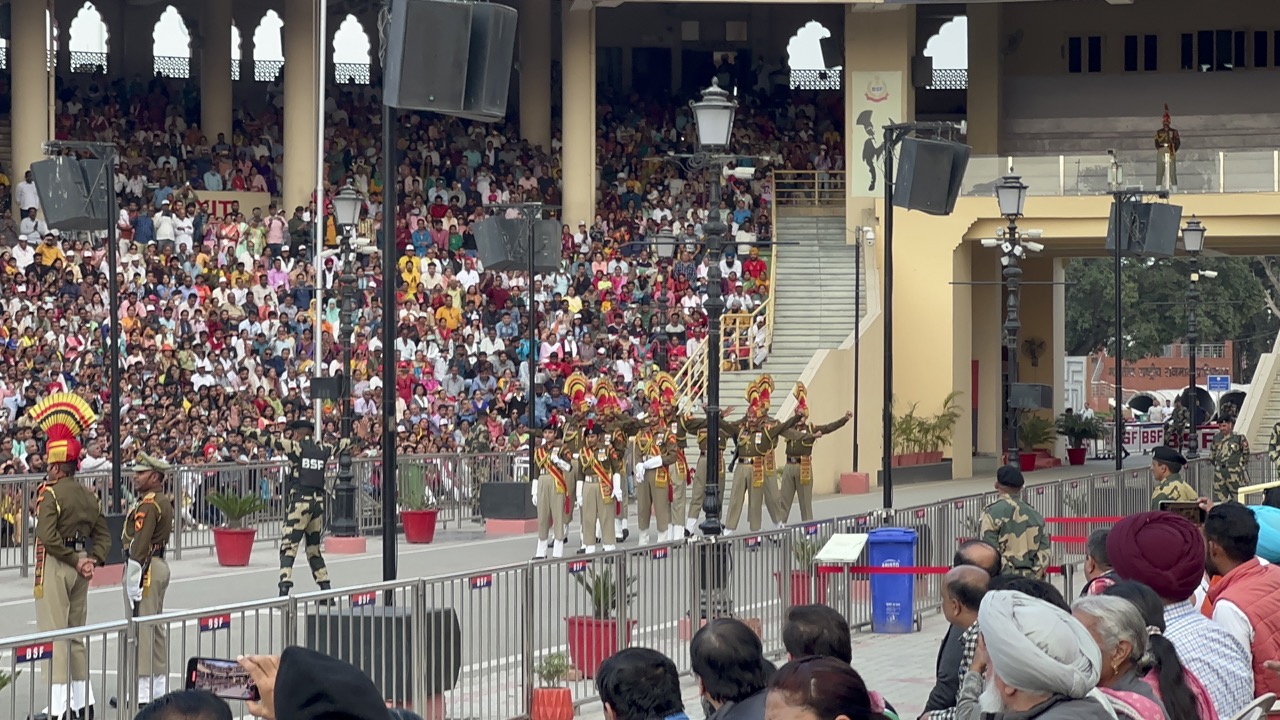
Eventually, enough soldiers made it to the fence, and the fence was opened, allowing the soldiers from both sides to confront each other face to face. A soldier from each side paraded side to side, trying to one-up their counterpart with the height of their steps, before they met in the middle and shook hands. And still, while all this was going on, the MC was leading us in "Jai Hind"s and "Hindustan Zindibad"s. Finally, the flags were untied, and eventually lowered, and after one final handshake, the gate was abruptly shut, and the ceremony was over.
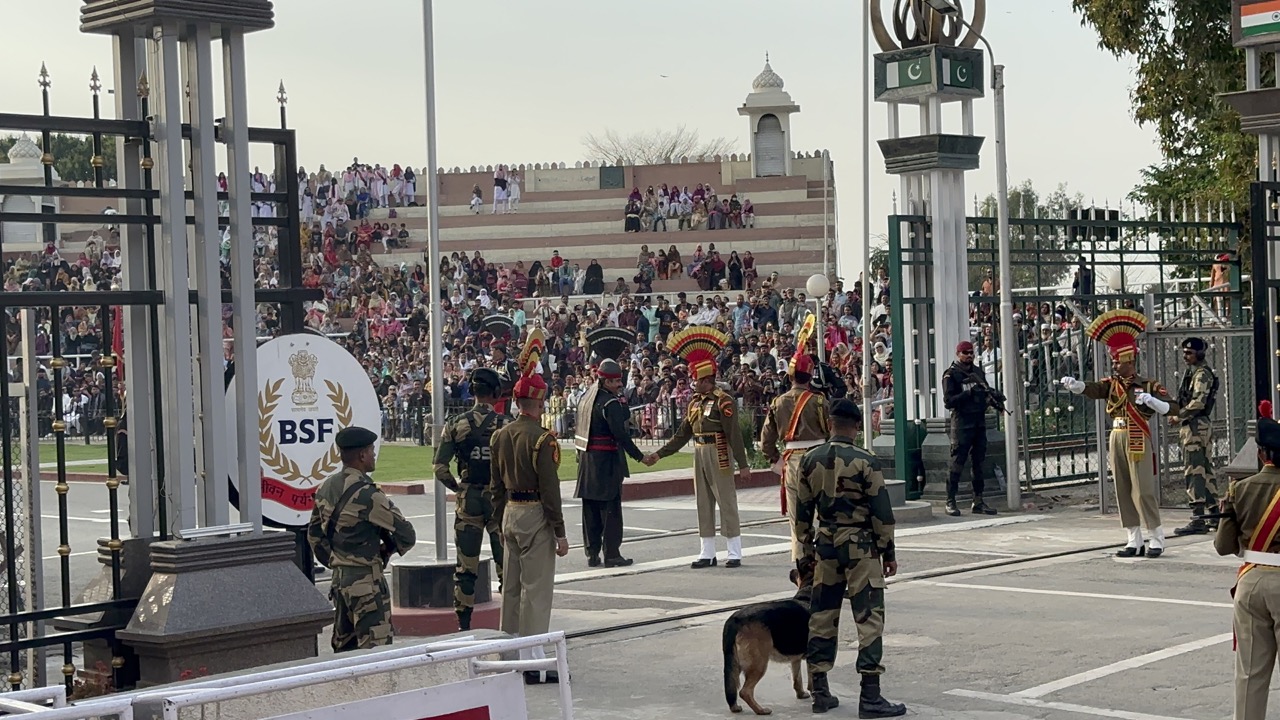
I navigated my way through the crowd to meet back up with the driver, and we began the long drive back to Amritsar. After getting back to the hotel, I went to see the city at night. I got some more lassi, and then went to the Golden Temple to see it lit up at night. While there I ate some khada prasad, which is a sweet halwa that is served at the Golden Temple and is very rich. I watched as they began the nightly procession to bring the Guru Granth Sahib out of the Golden Temple to take it to an adjacent building where it sleeps at night.
